
7pm May 17 at Saragoga Lib [2023-05-28]

As a well-respected, trusted, and influential leader in Saratoga County, Saratoga PLAN [Preserving Land and Nature] has facilitated the conservation of more than 7,000 acres of land and over 200 miles of trails.
In 2023, as they embark on their 20th year, PLAN has big plans to increase the pace of conservation and make a more significant impact within our community.
The event is in the Dutcher Room at the library, no need to register, just show up.
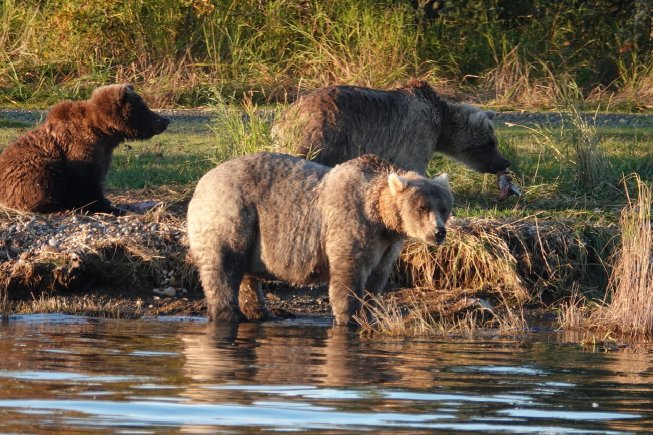
Most visitors come to Katmai National Park to see and photograph the large numbers of brown bears that congregate at Brooks Falls to feed on the abundant spawning salmon. Katmai became a national monument in 1918 following the eruption of the Novarupta Volcano in 1912. Katmai National Park has 15 active volcanoes and its eruption was the world’s largest in the 20th Century.
David Govatski will share every thing you need to know about traveling to Alaska to see the bears, including bear behavior, safety and general travel tips.
David retired from the US Forest Service after a 33-year career and currently works as a naturalist. He works as an expedition ship naturalist in Alaska in the summer and has visited and studied brown bears at Katmai, Lake Clark, Glacier Bay and Denali National Parks and elsewhere.
Thursday Nov 17 at 7PM, In-Person, Saratoga Library [2022-10-30]

This is the story of their ancestors across millennia, during which time they created homelands, developed new technologies, connected with neighbors near and far, and expanded trade routes, while cultivating a rich cultural heritage and an oral tradition back to the time of the First Nations and Last Elephants.
Tom Lake is a naturalist and educator for NYSDEC's Husdon River Estuary Program, editor of the weekly natural history journal The Husdon River Almanac and has taught Anthropology at SUNY Dutchess County Community College. He is also an archaeologist and for 20 years commercially fished for American shad until low stocks required that fishing for shad be ended.

Jim and Mo Coutant are long time ADK members who are active with the Glens Falls-Saratoga Chapter of ADK. They have led many outings for the Chapter with Mo leading weekly trips during the years when their daughter was in school. Jim retired from NYS DEC as an Air Pollution Engineer just prior to this trip.
Registration is now no longer required! The program will be in the Dutcher Room at Saratoga Springs Public Library. For more info click: sspl.libcal.com/event/8437254

Suzanne was born and raised in the rural mountains of West Central Maine and now lives in the Adirondacks. She is a tribally affiliated Native American, and her ancestors worked and lived close to the land. Her father and grandfather worked in the woods and instilled in her at an early age the way of balance that humans must live by to ensure food and natural resources for future living. In addition to being a talented poet, singer/songwriter and multimodal artist, Suzanne is an Expressive Arts Therapist and Alcohol and Substance Abuse Counselor. Seating is limited and registration is required. Registration is through the Saratoga Springs Public Library.
Registion Link: sspl.libcal.com/calendar/

In each city they stayed in hotels in the old section (medina), where cars are not allowed due to extremely narrow 'streets.' Even though they had been given maps of the medinas, navigating these narrow, very crooked and maze-like lanes was quite the experience. Fes has one of the largest medinas and one of the largest car-free urban areas in the world.
Seating is limited and registration is required. Registration is through the Saratoga Springs Public Library website:
Registion Link: sspl.libcal.com/event/6641971

Join Al Hicks, a retired New York State Department of Environmental Conservation biologist, for an update on the impact of climate change in our area and beyond, and a discussion of ways forward to address climate change. In addition, Hicks will discuss the current state of bat populations devastated by the white-nose syndrome, one of his areas of expertise.
Youtube Link: youtube.com/watch?v=jaEWnGwAoNo

The village was created in 1829 to support what became the McIntyre Iron and Steel Company. It has been abandoned and reoccupied twice, and today is the southern entrance to the High Peaks Wilderness area, as well as a singular site of historic industrial engineering.
The program will run 45 minutes with open Q & A following. This online program uses the Zoom livestreaming platform. It will require access to a computer or mobile device with the Zoom app installed, or a phone for audio-only access.
Youtube Link: youtu.be/fD4wyyQl6fo
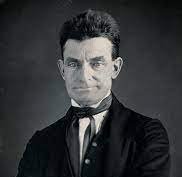
Today, John Brown Lives! is both the official friends group of the 250-acre state historic site abutting the High Peaks Forest Preserve, and a freedom education and human rights project active in the North Country.
Longtime ADK members Benita Law-Diao and Jeff Jones are also JBL! board members and human rights activists. Influenced by the Black Lives Matter movement, their presentation will focus on the group's programs and activities designed to bring fresh awareness to the Farm's role in Adirondack, New York and U.S. history.
Youtube: https://www.youtube.com/watch?v=yfbUBIggDUI

These include stone arch bridges in Keeseville and Ticonderoga; covered bridges in Jay and Edinburg; iron trusses over the AuSable, Hudson, Saranac, Raquette, Moose and Sacandaga Rivers; reinforced concrete, stone-faced spans in Keene, Piercefield and Black Brook; and the marvelous steel arch bridge over AuSable Chasm.
These bridges reflect fascinating changes in technology and transportation and also tell important stories about the growth and development of Adirondack communities. As bridges are among our most endangered historic resources, the program also looks at successful strategies for preserving these regional treasures. Registration is through the Saratoga Springs Public Library.
Youtube: https://www.youtube.com/watch?v=A9ecILlIEAY
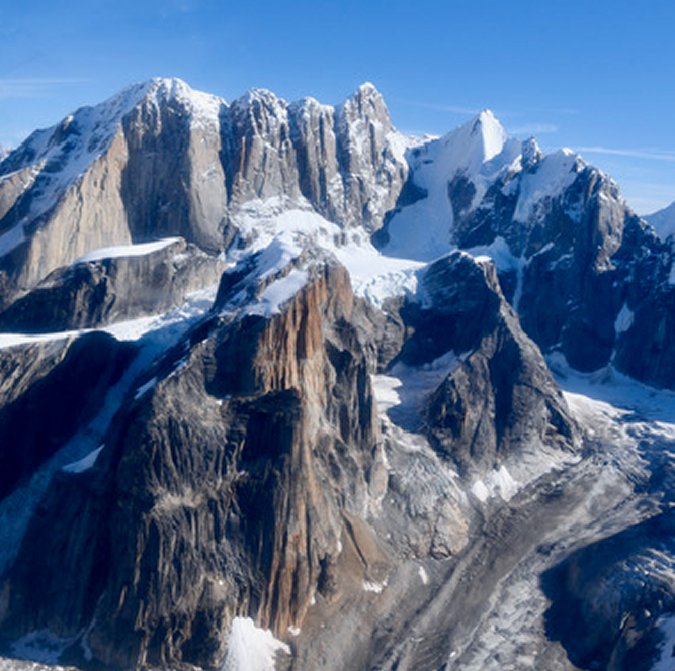
Peter Benoit is a nature photographer based in Queensbury, NY. His photographs frequently celebrate life within the Adirondack “Blue Line” along with other regions of North American and Europe.
Youtube: https://www.youtube.com/watch?v=sSH9r-PV6nU
In the manager role Tammara is overseeing the Adirondack response to two new recent forest pests that have the potential to dramatically alter the Adirondack landscape. Join Tammara for a fascinating discussion of forest pests, climate change, and how you can help identify and report invasive species. In 2020 Tammara moved from the Saratoga area to Saranac Lake to work for The Nature Conservancy. S he has paddled and hiked many corners of the Adirondacks.

Built by Roman emperor Hadrian in AD 122, the path extends for 84 miles near the border with Scotland. Ruins of the wall and Roman fortifications highlighted their 120 mile, 13 day walk with excellent weather and accommodations.
View Online: youtu.be/ySOTUsYAVGM

Dan joined the faculty at Paul Smith’s College (PSC) in 2003 as Executive Director of the Adirondack Watershed Institute (AWI). Under his leadership, the AWI has developed the largest water quality monitoring and aquatic invasive species programs in the Adirondacks.
Kelting uses data from these programs to support and leverage his research and that of the Institute. He also teaches upper level courses in Forest Soils and Laboratory Methods, and mentors students for their undergraduate capstone projects.
View Online: youtube.com/watch?v=Bje3DlIQncs
Thursday, 7 pm January 16, 2020 Saratoga Springs Public Library
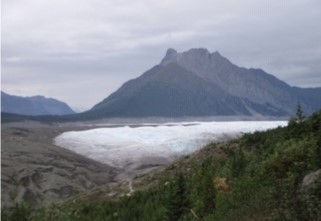 Long-time ADKers Don Berens and David Pisaneschi will share a photo-program of their July 2019 trip to three US national parks
in Alaska.
/They visited Wrangell - St. Elias NP, the country's largest, with eight of the ten highest peaks in the US.
They also camped and hiked north of the Arctic Circle in two roadless parks: Kobuk Valley NP with unusual sand dune fields,
and Gates of the Arctic NP, the country's least visited NP.
Long-time ADKers Don Berens and David Pisaneschi will share a photo-program of their July 2019 trip to three US national parks
in Alaska.
/They visited Wrangell - St. Elias NP, the country's largest, with eight of the ten highest peaks in the US.
They also camped and hiked north of the Arctic Circle in two roadless parks: Kobuk Valley NP with unusual sand dune fields,
and Gates of the Arctic NP, the country's least visited NP.
Don and David have both held offices in ADK and its chapters; David is currently vice-chair of ADK's Conservation Committee and an ADK adventure travel leader. Both are winter 46ers, and have climbed the Catskill 3500-footers and the Northeast 115; Don has visited the highpoint of each US state. David is a paddler and Don is a cyclist. Each has hiked in mountain ranges of other continents and visited Alaska multiple times.
Thursday, 7 pm November 21, 2019 Saratoga Springs Public Library
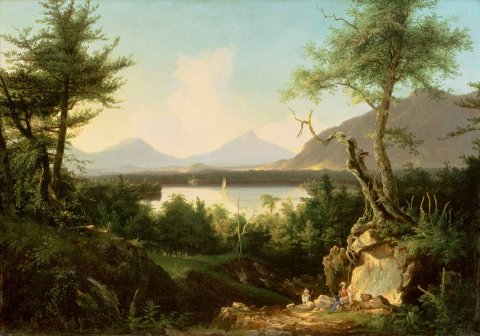 Landscape paintings by 19th-century Hudson River School artists celebrate the majestic beauty of the United States.
Their work brought pride to the new nation and helped shape an emerging American identity. The grand, scenic
landscapes also influenced the beginnings of the environmental movement in the country.
Landscape paintings by 19th-century Hudson River School artists celebrate the majestic beauty of the United States.
Their work brought pride to the new nation and helped shape an emerging American identity. The grand, scenic
landscapes also influenced the beginnings of the environmental movement in the country.
This program by Patrick Stenshorn of the Albany Institute of History and Art will provide insights into the Hudson River School and its impact on the conservation movements of the late 19th and 20th centuries.
Patrick Stenshorn is the Director of Interpretive Programs at the Albany Institute of Art History. He is a graduate of SUNY Geneseo with a B.A. in history, and SUNY Brockport with an M.A. in History with a concentration in early American History. He has also served as a park ranger for the National Park Service.
 Join Russell Dunn, a former New York State licensed hiking guide, as he shares wonderful hiking destinations
with amazing boulders and natural rock formations.
Join Russell Dunn, a former New York State licensed hiking guide, as he shares wonderful hiking destinations
with amazing boulders and natural rock formations.
Dunn is the author of nine regional waterfall guidebooks, four regional paddling guidebooks, eight regional hiking guidebooks, and eleven 3D photobooks of stereographic images.
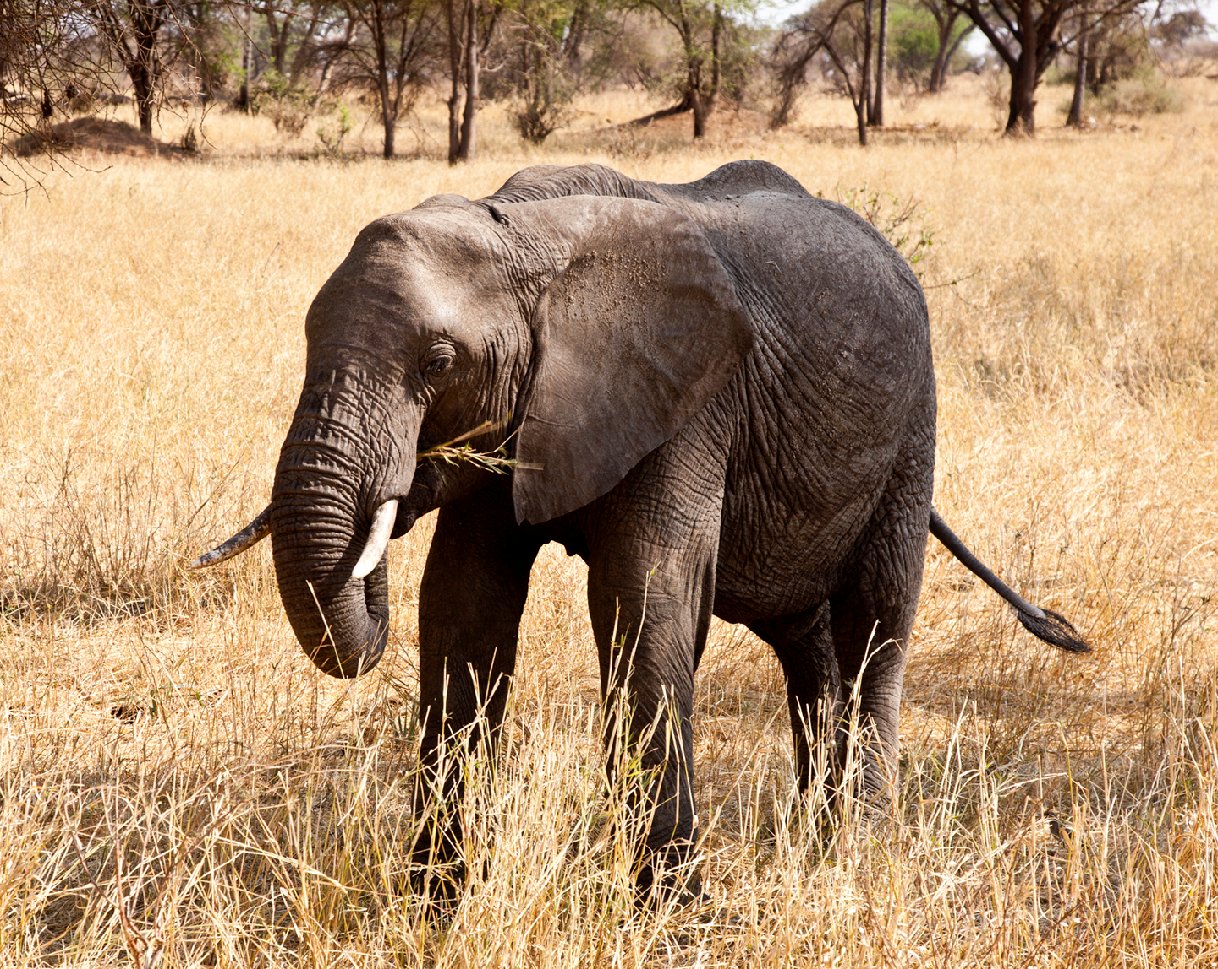 Betsy and Bob Birchenough of Queensbury have traveled all over the world for their work in radiology and for fun: Australia, New Zealand,
China, Peru, Ecuador, and all of Europe. The Tanzania trip came about after they met an Australian couple at Machu Picchu. That couple
happened to be on a three-year road trip from the southern tip of South America to the Arctic. Betsy and Bob invited them to stop by and
visit at their home in Lake George. Three years later in 2012 they received an invitation to their wedding in Tanzania. Invitation accepted!
The trip exceeded all the wildest expectations: National parks, safaris, villages and cities visited in two weeks.
Betsy and Bob Birchenough of Queensbury have traveled all over the world for their work in radiology and for fun: Australia, New Zealand,
China, Peru, Ecuador, and all of Europe. The Tanzania trip came about after they met an Australian couple at Machu Picchu. That couple
happened to be on a three-year road trip from the southern tip of South America to the Arctic. Betsy and Bob invited them to stop by and
visit at their home in Lake George. Three years later in 2012 they received an invitation to their wedding in Tanzania. Invitation accepted!
The trip exceeded all the wildest expectations: National parks, safaris, villages and cities visited in two weeks.
Examples of the adventure include Tarangire National Park with 550 breeding bird species, the largest number in the world. The visit coincided with the dry season, the best time to see the largest number of large mammals in the wild: elephants, zebras, giraffes, etc. This National Park includes the Ngorongoro Conservation Park, a UNESCO Heritage site since 1974 that was formed by a large volcano 3 million years ago The crater floor covers 100 sq. miles.
Presented by Erik Schlimmer: 7pm Wed at Saratoga Library
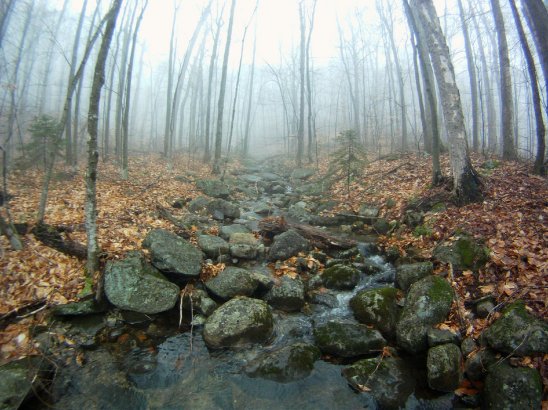 During the past thirty years, Erik has explored the wildest places in America. Some of his trips include mountain biking
across the United States twice, paddling the Delaware and Susquehanna rivers from source to sea, and hiking nearly
2,000 mountains. The mountains he's most familiar with are the Adirondacks. Today he'll share some of his photos of
this range as well as what his extensive research has revealed about place names.
In this month's program, join Erik Schlimmer, a founding member of Friends of The Trans Adirondack Trail and an
award-winning author and educator, to hear the stories behind place names in the Adirondacks. Erik historically
decodes 100 Adirondack place names in rousing detail, supported by a backdrop of his gorgeous photos from the wilderness.
Co-sponsored by the Adirondack Mountain Club and Saratoga Springs Public Library.
During the past thirty years, Erik has explored the wildest places in America. Some of his trips include mountain biking
across the United States twice, paddling the Delaware and Susquehanna rivers from source to sea, and hiking nearly
2,000 mountains. The mountains he's most familiar with are the Adirondacks. Today he'll share some of his photos of
this range as well as what his extensive research has revealed about place names.
In this month's program, join Erik Schlimmer, a founding member of Friends of The Trans Adirondack Trail and an
award-winning author and educator, to hear the stories behind place names in the Adirondacks. Erik historically
decodes 100 Adirondack place names in rousing detail, supported by a backdrop of his gorgeous photos from the wilderness.
Co-sponsored by the Adirondack Mountain Club and Saratoga Springs Public Library.
 Last summer my wife Eileen and I spent two weeks on a 150-passenger expedition cruise ship traveling from Svalbard, Norway
to Greenland and ending in Iceland. Then we spent 10 days on our own touring the southern part of Iceland.
At one point on our cruise we were only a little more than 600 miles from the North Pole, much farther north than the north
slope of Alaska. Our reason for this cruise was to see polar bears, and I would have been satisfied seeing just one.
I saw more than 20 and the ship's bridge spotted a total of 33 bears. Three times we saw single bears and once a mother
and cub come really close to the ship. One actually came up and touched the ship. To see polar bears in their element
has been one of the highlights of all my travels.
Last summer my wife Eileen and I spent two weeks on a 150-passenger expedition cruise ship traveling from Svalbard, Norway
to Greenland and ending in Iceland. Then we spent 10 days on our own touring the southern part of Iceland.
At one point on our cruise we were only a little more than 600 miles from the North Pole, much farther north than the north
slope of Alaska. Our reason for this cruise was to see polar bears, and I would have been satisfied seeing just one.
I saw more than 20 and the ship's bridge spotted a total of 33 bears. Three times we saw single bears and once a mother
and cub come really close to the ship. One actually came up and touched the ship. To see polar bears in their element
has been one of the highlights of all my travels.
On this trip we went ashore as often as possible to go on hikes. This occurred after staff had verified that no polar bears were in the area. Even then, all leaders carried powerful rifles, just in case a bear came upon us from out of nowhere - on one of our hikes we did spot bear prints on the beach. We also took zodiac boat rides among a large group of walruses, close to icebergs, calving glaciers, and near seabird rookeries. We visited a Greenland Inuit village where we saw polar bear and musk ox hides hanging up to dry and witnessed a man carving up the remains of a walrus.
Other animals we spotted were reindeer, seals, and blue and humpback whales. In addition, we saw thousands and thousands of sea birds, many on their nests raising their young or still hatching their eggs. One of my favorite birds is the Arctic tern that sees two summers each year as it migrates from its northern Arctic breeding grounds to the Antarctic coast for the southern summer and then back six months later. These terns have the longest migration in the animal kingdom, with an average round trip flight as much as 44,100 miles for those nesting in Iceland or Greenland.
In Iceland we drove over 800 miles along its southern coast and saw many waterfalls and glaciers. We spent one day hiking to the end of a glacier. Once we drove through miles and miles of blue, white and beige lupine - reminding me of driving in Texas in the spring. Eileen loved seeing Icelandic sheep and horses - Icelandic horses are born with a very smooth gait that is different from that of non-Icelandic horses.
 Join Steve Mackey as he discusses his September 2018 trip (with his daughter) over the Great Divide Mountain Bike Route.
It is the longest mapped mountain bike route in the world, starting in Jasper, Alberta and ending at the Mexican Border
in Antelope Wells, New Mexico. It follows the Continental Divide (as well as the Continental Divide Hiking Trail) and
crosses the divide 32 times.
Join Steve Mackey as he discusses his September 2018 trip (with his daughter) over the Great Divide Mountain Bike Route.
It is the longest mapped mountain bike route in the world, starting in Jasper, Alberta and ending at the Mexican Border
in Antelope Wells, New Mexico. It follows the Continental Divide (as well as the Continental Divide Hiking Trail) and
crosses the divide 32 times.
Around 80 percent of it is on gravel roads with the remainder being single track or paved roads. Steve and his daughter averaged 50 to 60 miles per day, riding for two months, with a total of 3,335 miles logged on their bicycle odometers.
Steve has quite a few stories to tell, including: getting hit by a bus/trailer/kayak, having one of their bikes stolen, getting bogged down in impassable mud, getting rained on five times in one day, having days where they saw only two or three other humans, crossing mountain passes with bear spray at the ready, and seeing some of the most beautiful, remote scenery in the country.
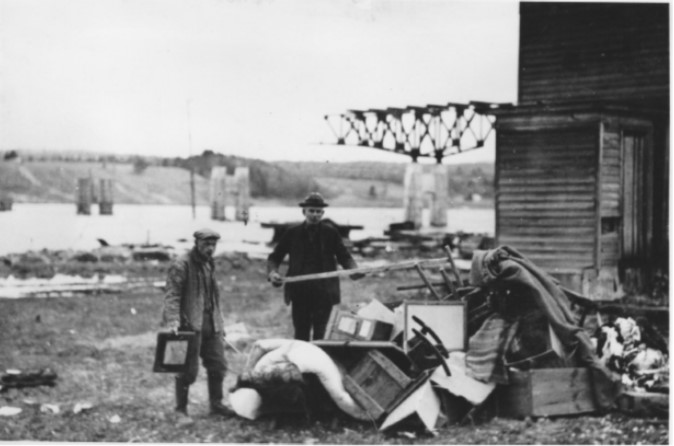 Learn about one of the Adirondack's great engineering feats at a screening of "Harnessing Nature:
Building the Great Sacandaga", Wednesday, November 14 at Crandall Public Library, 7:00 p.m., co-sponsored by Folklife
Center at Crandall Public Library.
Learn about one of the Adirondack's great engineering feats at a screening of "Harnessing Nature:
Building the Great Sacandaga", Wednesday, November 14 at Crandall Public Library, 7:00 p.m., co-sponsored by Folklife
Center at Crandall Public Library.
"Harnessing Nature" chronicles the incredible creation of the Great Sacandaga Lake, including first-hand accounts of valley residents and original documents describing this amazing feat of engineering.
For the residents of the Sacandaga Valley, the loss of their homes and communities was devastating. For the residents downstream who had suffered staggering losses from years of flooding, it was long overdue. For those who live along its shores today, it is important to understand the story of the Great Sacandaga Lake. The DVD run time is 80 minutes. Jason Kemper and Saratoga County historian Lauren Roberts will both be there to answer questions and/or discuss the documentary process.
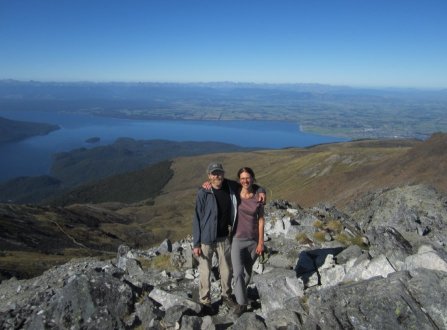 Join ADK members Tammara Van Ryn and Chris Lincoln for a presentation on their epic February to April 2018 trip
to Australia and New Zealand.
Join ADK members Tammara Van Ryn and Chris Lincoln for a presentation on their epic February to April 2018 trip
to Australia and New Zealand.
They hiked 250 miles, spent 23 nights in a tent, and 14 nights in a camper van! Chris and Tammara met with several conservation organizations during their trip, and will share insights gained on invasive species management in addition to their hiking stories.
Tammara Van Ryn and Chris Lincoln live in Greenwich, NY. They are long-time Adirondack Mountain Club members, and Tammara serves on the club's board of directors. Tammara works in land conservation, and Chris is an organic farm inspector. In their spare time they hike, canoe, garden and volunteer for several organizations.

 In April 2017 John Schneider took an 18-day trip to India and Bhutan. India is the world's second most populous country with 1.3 billion people.
Bhutan is a small kingdom with 780,000 people. After a long nonstop flight to New Delhi, India, John took one day to acclimate.
The following day his group boarded a train before 6:00 am for a 140-mile ride to Agra to visit the Taj Mahal and three other sites in the area.
They experienced interesting traffic conditions in both New Delhi and Agra.
In April 2017 John Schneider took an 18-day trip to India and Bhutan. India is the world's second most populous country with 1.3 billion people.
Bhutan is a small kingdom with 780,000 people. After a long nonstop flight to New Delhi, India, John took one day to acclimate.
The following day his group boarded a train before 6:00 am for a 140-mile ride to Agra to visit the Taj Mahal and three other sites in the area.
They experienced interesting traffic conditions in both New Delhi and Agra.
The group then flew north to Sikkim, once an independent kingdom, but since 1975 a small Indian state bordered by Nepal, Tibet, and Bhutan. There they went on a 5-day trekking trip with views of the Himalayas, especially Mount Kanchejunga, highest peak in India and third highest in the world at 28,169 feet. They stayed at mountain "lodges" and passed through forests with many different types of rhododendrons and saw the famous Himalayan yaks. In addition to trekking in Sikkim, the group traveled along valleys so steep the front of a home at street level was three stories above ground at the rear of the house only 10-15 feet back from the street. They also visited monasteries, a Tibetan refugee center, art centers, and stopped at tea plantations to sample world-famous Darjeeling teas.
Then a flight to Bhutan, whose main airport approach is so unusual and difficult that only about 24 commercial pilots are certified to land there. Bhutan is a very modestly populated country with modest traffic and virtually no traffic lights or stop signs in the capital city of Thimphu of 104,000 people. Bhutan is a Buddhist nation that pioneered the concept of "gross national happiness." The group visited a number of its 500-year old former forts, which contained both religious and governmental units. The group visited cultural and religious sites, museums, and one of the world's largest statues of a seated Buddha, at 169 feet tall. A highlight of the trip in Bhutan was a hike to the Tiger's Nest, a Buddhist monastery literally built on the side of a very high cliff. Come enjoy pictures of the New Delhi traffic, cows in the middle of such traffic, the most awe-inspiring Taj Mahal, unusual architectural features, Asian toilets, the hiking trek, monasteries and cultural places, the unique architecture of Bhutan, the large Buddha statue, the Tiger's Nest Monastery, and of course views of the Himalayan Mountains.
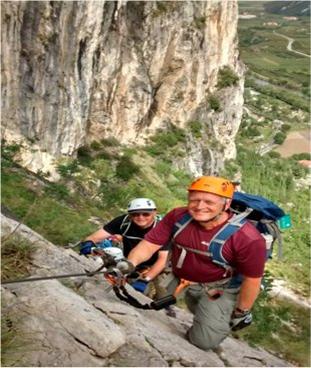
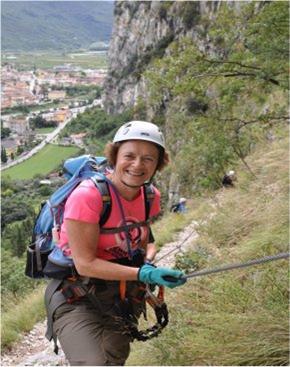 This program is being presented by ADK members Doug and Judy Beers
This program is being presented by ADK members Doug and Judy Beers
 2016 marked the 50th anniversary of the National Historic Preservation Act. This program by Steven Engelhart is a general introduction
to understanding the importance of preserving our nation's built environment.
2016 marked the 50th anniversary of the National Historic Preservation Act. This program by Steven Engelhart is a general introduction
to understanding the importance of preserving our nation's built environment.
Using illustrations from all over the eastern seaboard and from the Adirondack region, it explores the many reasons that individuals, businesses, non-profit organizations and governments are increasingly involved in promoting historic preservation, because preserving architecture adds beauty to our lives, connect us to our past, fosters community and national identity, contributes to community revitalization, helps to conserve energy, and is part of how we manage change and growth in an increasingly chaotic world. Irresistible, right?
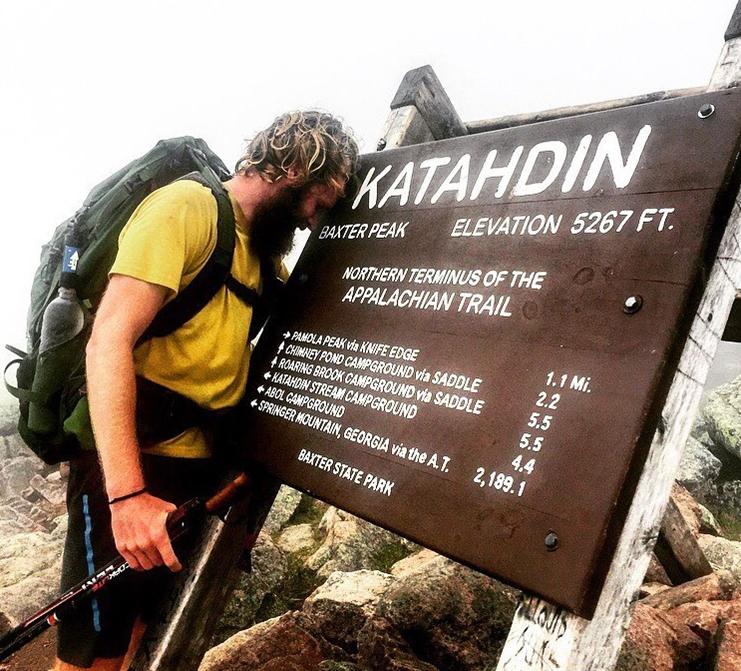 "7,000 Miles to a Wilderness Ethic: A Transformation After One Year on the Pacific Crest Trail, Te Araroa, and the Appalachian Trail"
is a program by Tyler Socash
"7,000 Miles to a Wilderness Ethic: A Transformation After One Year on the Pacific Crest Trail, Te Araroa, and the Appalachian Trail"
is a program by Tyler Socash
Bob Marshall once wrote, "It's a great thing these days to leave civilization for a while and return to nature." A native Adirondacker and current Outdoor Skills Coordinator for the Adirondack Mountain Club, Tyler Socash, fully embodied Bob's sentiments.
After 28 years of outdoor recreation inside the Adirondack Park, Socash went beyond the Blue Line to complete a yearlong trek across the Pacific Crest Trail, New Zealand's Te Araroa, and the heralded Appalachian Trail. It's a lively tale, 7,000 miles in the making, of mountaintop euphoria, unexpected trail magic, encounters with long-distance legends, heartbreak and renewal. This grand adventure into the wilderness inspired Socash to help defend the wildest remaining places in New York's Forest Preserve, namely, the newly purchased Boreas Ponds Tract.
If you've ever imagined completing a thru-hike someday, this is the presentation to attend! The intricacies of thru-hiking will be discussed, but be forewarned that the photographs and the entertaining retelling of the quest may spark your own wanderlust sooner than expected.
Tyler Socash grew up in Old Forge, NY. Annual family camping trips on Alger Island and numerous hikes up Bald Mountain helped him develop an everlasting connection with the Adirondack Park. After high school he completed both his bachelor's degree and master's degree at the University of Rochester. He currently resides in Keene, NY, returning to work in outdoor education with the Adirondack Mountain Club.
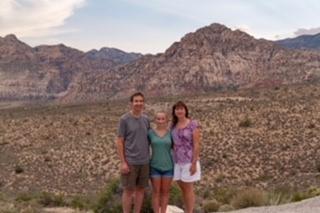 Maureen and Jim Coutant took a vacation inspired by some of the National Park programs put on over the years
by John Schneider, Dan D'Angelico, or the Mackey's. Their 13 yr. old daughter had never been out west, so it
was a mission to hit as much as possible in 2 weeks.
Maureen and Jim Coutant took a vacation inspired by some of the National Park programs put on over the years
by John Schneider, Dan D'Angelico, or the Mackey's. Their 13 yr. old daughter had never been out west, so it
was a mission to hit as much as possible in 2 weeks.
So, join us to see the highlights of some impressive National Parks & Forests including Red Rocks, Death Valley, Sequoia, Yosemite, John Muir and more. Plus, other landmarks along the way.
 Bob Bayle's new book features the photographs and writing of his father Francis Bayle. While his vocation was engineering,
Francis' avocations were exploring the Adirondacks and photography. Between the years 1910 and 1970, he took many hundreds
of photographs of the Adirondack region, providing a unique representation of what the area looked like in the early 20th
century. He was an active member of the Adirondack Mountain Club and the Glens Falls Camera Club. He also served as editor
for the Adirondack Mountain Club magazine, writing several articles about his photography, hiking trips and opinions
about the Adirondacks.
Bob Bayle's new book features the photographs and writing of his father Francis Bayle. While his vocation was engineering,
Francis' avocations were exploring the Adirondacks and photography. Between the years 1910 and 1970, he took many hundreds
of photographs of the Adirondack region, providing a unique representation of what the area looked like in the early 20th
century. He was an active member of the Adirondack Mountain Club and the Glens Falls Camera Club. He also served as editor
for the Adirondack Mountain Club magazine, writing several articles about his photography, hiking trips and opinions
about the Adirondacks.
Bob Bayle is the son of Francis Bayle, and a retired science teacher, who is actively involved with the Glens Falls-Queensbury Historical Society, Chapman Historical Museum and the Warren County Historical Society. He is co-author of 3 Images of America books about Glens Falls, New York.
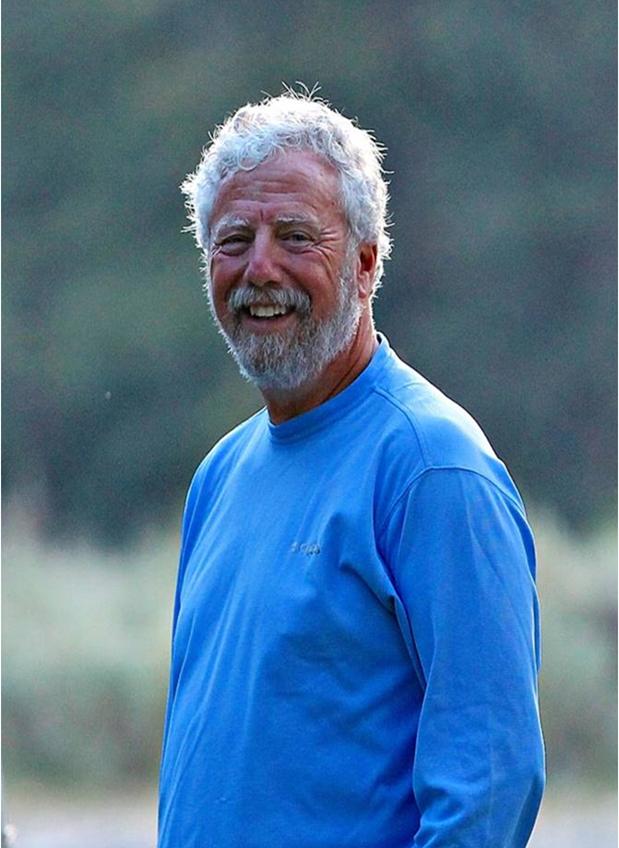 Joe Allen has been a lecturer at the University of Buffalo for 22 years in the Environmental Studies Program.
He taught many academic field courses, including Introduction to Environmental Problems, Wildlife and Wetland
Management, and the Ecology of Unique environments - specifically Yellowstone National Park and Wind River Range,
Wyoming. Although retired, he continues to teach experiential courses and lead excursions through
"Earth Spirit Educational Services."
Joe Allen has been a lecturer at the University of Buffalo for 22 years in the Environmental Studies Program.
He taught many academic field courses, including Introduction to Environmental Problems, Wildlife and Wetland
Management, and the Ecology of Unique environments - specifically Yellowstone National Park and Wind River Range,
Wyoming. Although retired, he continues to teach experiential courses and lead excursions through
"Earth Spirit Educational Services."
At our dinner Joe will describe the wolf reintroduction program in Yellowstone, the successes and tribulations of the reintroduction, and its impact on the greater Yellowstone ecosystem. Joe has many stories and lots of photographs and video he has taken over the years.
We look forward to this informative event on wilderness preservation, rewilding and environmental ethics. Members and non-members are welcome.
 Gretchen Steen of Fort Edward traveled extensively throughout her career as a Spanish teacher, both to keep up her language skills and to offer students
the opportunity to experience Spanish culture and language first hand. Since she retired, the travels continue. She and her sister Linda joined Father
Tom Babiuch's Fort Edward travel group on a trip to the Holy Land in October of 2016.
Gretchen Steen of Fort Edward traveled extensively throughout her career as a Spanish teacher, both to keep up her language skills and to offer students
the opportunity to experience Spanish culture and language first hand. Since she retired, the travels continue. She and her sister Linda joined Father
Tom Babiuch's Fort Edward travel group on a trip to the Holy Land in October of 2016.
They started in Tel Aviv, traveled along the coast to Caesarea, Haifa and Acre. Tiberias, the Sea of Galilee and the Golan Heights were the next stops. Along the way they visited the towns of the Bible. Each was blessed in the River Jordan on their way to Jericho. Floating in the Dead Sea was a unique adventure. And then they experienced Jerusalem. This program weaves in and out of Israel and Palestinian territories exploring this region which is so fascinating historically, religiously and culturally.
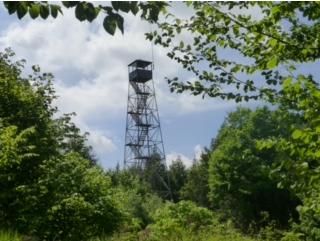 Everyone enjoys the views from the cab of a fire tower, but why are they there in the first place?
Please join Laurie Rankin, Director of the NYS Chapter of the Forest Fire Lookout Association for an in depth
look at why fire towers were placed on so many of the mountaintops in the Adirondacks. After you see and hear
all of the details, you will be looking at things a bit differently on your next hike to one. Perhaps you will
even want to get involved in restoring one.
Everyone enjoys the views from the cab of a fire tower, but why are they there in the first place?
Please join Laurie Rankin, Director of the NYS Chapter of the Forest Fire Lookout Association for an in depth
look at why fire towers were placed on so many of the mountaintops in the Adirondacks. After you see and hear
all of the details, you will be looking at things a bit differently on your next hike to one. Perhaps you will
even want to get involved in restoring one.
Along with being the NYS Chapter Director of the FFLA, Laurie is the daughter of the last full time Fire Tower Observer on Balsam Lake Mountain in the Catskills, an ADK Fire Tower Challenge finisher, and an avid hiker who has completed the NE 115 in both summer and winter. Laurie is currently enjoying taking the grandchildren to revisit these special places and get the views from on high.
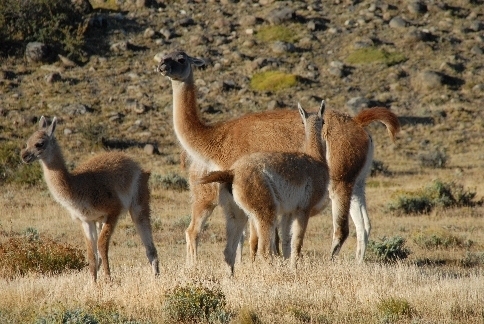 Everyone enjoys the views from the cab of a fire tower, but why are they there in the first place? Please join Laurie Rankin,
Director of the NYS Chapter of the Forest Fire Lookout Association for an in depth look at why fire towers were placed on so
many of the mountaintops in the Adirondacks. After you see and hear all of the details, you will be looking at things a bit
differently on your next hike to one. Perhaps you will even want to get involved in restoring one.
Along with being the NYS Chapter Director of the FFLA, Laurie is the daughter of the last full time Fire Tower Observer
on Balsam Lake Mountain in the Catskills, an ADK Fire Tower Challenge finisher, and an avid hiker who has completed the
NE 115 in both summer and winter. Laurie is currently enjoying taking the grandchildren to revisit these special places
and get the views from on high.
Everyone enjoys the views from the cab of a fire tower, but why are they there in the first place? Please join Laurie Rankin,
Director of the NYS Chapter of the Forest Fire Lookout Association for an in depth look at why fire towers were placed on so
many of the mountaintops in the Adirondacks. After you see and hear all of the details, you will be looking at things a bit
differently on your next hike to one. Perhaps you will even want to get involved in restoring one.
Along with being the NYS Chapter Director of the FFLA, Laurie is the daughter of the last full time Fire Tower Observer
on Balsam Lake Mountain in the Catskills, an ADK Fire Tower Challenge finisher, and an avid hiker who has completed the
NE 115 in both summer and winter. Laurie is currently enjoying taking the grandchildren to revisit these special places
and get the views from on high.
I'll end the program with aerial views of a number of glaciers from the world's second largest non-polar ice field. The flow of these "rivers of ice" is amazing to behold.
 Peter Benoit has been an active member of the Adirondack Mountain Club for over 30 years and currently sits on the Personnel Committee
of ADK's Board of Directors. Peter is the Finance Director of the Lower Adirondack Search and Rescue Team based in Warrensburg, NY.
He joined the Team when it formed in 1990 and served as President from 2000-2008. He is certified by the NYS DEC Forest Rangers as a Crew Boss.
Peter Benoit has been an active member of the Adirondack Mountain Club for over 30 years and currently sits on the Personnel Committee
of ADK's Board of Directors. Peter is the Finance Director of the Lower Adirondack Search and Rescue Team based in Warrensburg, NY.
He joined the Team when it formed in 1990 and served as President from 2000-2008. He is certified by the NYS DEC Forest Rangers as a Crew Boss.
Peter is an Adirondack 46er and an aspiring winter 46er. He is a former New York State Licensed Outdoor Guide. An avid photographer, hiker and winter mountaineer, Peter lives in Queensbury.
Survival on the Polar Ice, In Peter's own words: "At 12:30 p.m. GMT on April 14, 1996, the Spirit of Scotia landed at Ice Station Ruby on the polar ice cap. It was -55°F and then it got colder! We were now officially part of Kool School.
"I was one of five civilians to join 22 Air Force personnel in a three-day mission to simulate survival of a downed aircraft on the ice cap. The 109 Air Lift Wing, based at Stratton Air Force Base in Scotia, is charged with supporting military and National Science Foundation research staff at the South Pole. In order to remain qualified for those long flights, C-130 crew members must be recertified in cold weather survival conditions.
"We were tasked with building shelters for personal protection, maintaining our extreme cold weather clothing systems to prevent hypothermia and to ensure we have adequate food and water. Failure to plan was planning to fail. Several problems threatened the lives of several Kool School team members. In the end, we all endured."
Learn how Peter Benoit of Queensbury and two dozen others were trained to survive at "Kool School" on the polar ice cap. Air National Guard personnel and civilian guests participated in the extreme cold weather survival program organized by the 109th Airlift Wing at Stratton Air National Guard Base in Schenectady, NY.
 Come hear Adirondack Mountain Club's Summit Steward Coordinator, Kayla White, on New York's rarest ecosystem and what
you can do to protect it. The program will be held at Saratoga Public Library on Wednesday January 11 at 7 pm.
Come hear Adirondack Mountain Club's Summit Steward Coordinator, Kayla White, on New York's rarest ecosystem and what
you can do to protect it. The program will be held at Saratoga Public Library on Wednesday January 11 at 7 pm.
On top of the tallest mountains in the Adirondacks, there lives a fragile alpine ecosystem. There are 27 rare, threatened, and endangered arctic tundra plants that are specially adapted to harsh mountain weather. The High Peaks Summit Stewardship Program has worked to educate hikers on the importance of protecting alpine vegetation through responsible recreation and conservation.
Jan 11 - X Country Ski in Sweden by Ruben Lundstrom at 7 pm Saratoga Library
 A program "Cross Country Ski Touring in Sweden with Ruben Lundstrom from Sweden Outdoor Life" will be held
at Saratoga Public Library on Wednesday January 11 at 7 pm.
A program "Cross Country Ski Touring in Sweden with Ruben Lundstrom from Sweden Outdoor Life" will be held
at Saratoga Public Library on Wednesday January 11 at 7 pm.
Even before he could first walk (thanks to a mother who loves the mountains), Ruben Lundstrom has been exploring the north-west parts of Sweden. This vast wilderness above the Arctic Circle is populated only by reindeer and the indigenous people of Europe, the Sami.
Ruben was trained as a mountain ranger here, and has since led many mountain expeditions where the highlight mostly is winter sunlight and the northern lights.
In his presentation Ruben invites you to take part of his Swedish mountain adventures with fascinating stories, videos, and photos, including describing how he's now paying his debt to his mother by yearly winter mountain trips carrying all equipment, and sometimes the mum herself in the sled. Come hear about it yourself, and maybe join Ruben on his next adventure!
Tammara Van Ryn and Chris Lincoln at 7pm Saratoga LIb
 ADK members Tammara Van Ryn and Chris Lincoln started their travel adventures nearly thirty years ago as Peace Corps
forestry volunteers in Ecuador, South America. They fell in love with the Andes Mountains and used any excuse to travel,
hike, and explore when not working on projects. The experience also gave them the desire and confidence to travel
independently throughout Latin America after their return home.
ADK members Tammara Van Ryn and Chris Lincoln started their travel adventures nearly thirty years ago as Peace Corps
forestry volunteers in Ecuador, South America. They fell in love with the Andes Mountains and used any excuse to travel,
hike, and explore when not working on projects. The experience also gave them the desire and confidence to travel
independently throughout Latin America after their return home.
Traveling light, usually with a Lonely Planet guidebook in hand, they have visited every country in Central America and continue to explore South America. Along the way they have hiked volcanos in the middle of Lake Nicaragua, kayaked fjords in Chile, climbed the highest peak in Panama in sneakers, and watched the jungle come alive at dawn from the top of a Mayan pyramid.
To round out their hiking experiences in North America, they traveled to the Canadian Rockies several years ago. Join us for highlights of a few of these adventures, with an engaging and informative evening taking you through the Americas from Canadian Rockies' Banff National Park in the north to Patagonia's Torre del Paine and Los Glaciers National Parks in the south.
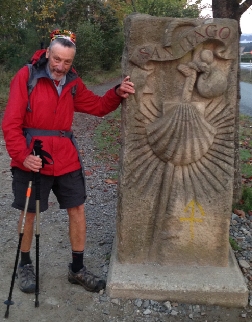 At 80 years old, Dr. William Tedesco, a longtime Glens Falls physician, decided to walk a 500-mile
spiritual pilgrimage across Spain on the historic Camino de Santiago, in part to raise money
for local hospice care and reflect on the passing of his wife.
At 80 years old, Dr. William Tedesco, a longtime Glens Falls physician, decided to walk a 500-mile
spiritual pilgrimage across Spain on the historic Camino de Santiago, in part to raise money
for local hospice care and reflect on the passing of his wife.
Dr. Tedesco retired after 50 years as a Family Physician in Glens Falls, but is still involved in Hospice and Palliative Care at the Glens Falls Hospital and in the community. The following is a description of what he wrote of the Camino. In his talk, he will speak about the history of the trail and it's global significance today.
"One could describe the Camino as a sort of metaphor of how we should, but rarely do, lead our lives in a busy world, walking everyday toward the horizon, carrying no "baggage", except what we require for our own personal needs, leaving oneself open to whatever comes around the next curve in the path and knowing there are others doing the same thing, who are willing to help you along the way. Walking forward without ever turning around or looking back until you reach your goal (Santiago), is an amazing feeling. Of course, knowing there is a shower, a bed, and good food and drink at the end of the day also helps. You just need to be willing to live outside of your comfort zone for about 40 days and nights or so.€
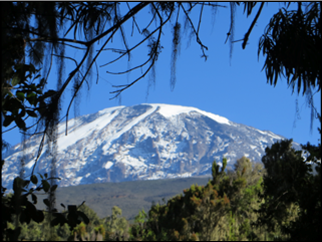 Journey to the Roof of Africa, Mt Kilimanjaro, on a seven day expedition. Along with the sights and experiences of this adventure,
we will be taken on a safari in Tanzania.
Journey to the Roof of Africa, Mt Kilimanjaro, on a seven day expedition. Along with the sights and experiences of this adventure,
we will be taken on a safari in Tanzania.
This will be followed by the visit Jean made to a Malawi village for which her students raised funds to purchase and install a lifesaving freshwater pump.
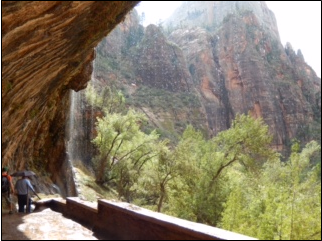 2016 is the 100th anniversary of the establishment of the National Park Service. Come join John Schneider as he relates last
fall's visit to more than 10 of our national parks and monuments as far north as Wyoming, as far west as Nevada, and as far south
as the Texas-Mexico border.
2016 is the 100th anniversary of the establishment of the National Park Service. Come join John Schneider as he relates last
fall's visit to more than 10 of our national parks and monuments as far north as Wyoming, as far west as Nevada, and as far south
as the Texas-Mexico border.
John and his wife Eileen took a 2½ month journey of more than 12,000 miles in their recreational vehicle to visit new parks as well as revisiting parks he has been to before. Among the many places they visited were Badlands National Park; Mount Rushmore; Crazy Horse Monument (the world's largest sculpture); Devil's Tower; Custer State Park; Wind Cave National Park; Jewel Cave National Monument; Great Basin National Park, one of our least visited parks; Zion National Park; Bryce Canyon National Park; Meteor Crater; Ghost Ranch, New Mexico; Big Bend National Park; Big Bend Ranch State Park; and two Texas Missions.
He went on many hikes including circumnavigating Devil's Tower (twice), hiking to the top of the highest peak in South Dakota, whose claim to fame is that it is the highest peak "Between the Rocky Mountains and the Pyrenees," and the famous Angel's Landing in Zion National Park, Utah. In addition to scenic wonders, John was also fortunate to capture pictures of many animals he saw in his travels. Those animals include big horn sheep, prairie dogs, snakes, squirrels, turkeys, mule deer, elk, and many others. Perhaps the highlight of his animal pictures is a group of aoudads.
Come join John as he celebrates the 100th anniversary of our National Park Service in 2016. He hopes that this will whet your appetite to visit our glorious national parks this year and in the future.
 Jennifer Hanson will share the tale of her 2,400-mile six-month back-packing trip from Mexico to Canada along the Continental Divide
National Scenic Trail (CDT). Using excerpts from her book Hiking the Continental Divide Trail: One Woman's Journey and a slide-show
of dozens of photographs, Jennifer will share the challenges and thrills of long-distance hiking.
Jennifer Hanson will share the tale of her 2,400-mile six-month back-packing trip from Mexico to Canada along the Continental Divide
National Scenic Trail (CDT). Using excerpts from her book Hiking the Continental Divide Trail: One Woman's Journey and a slide-show
of dozens of photographs, Jennifer will share the challenges and thrills of long-distance hiking.
The journey included trekking through arid ranchland, desert forests, and Indian reservations in New Mexico; the Bob Marshall Wilderness Area and Glacier National Park in Montana; the remote and rugged Bitterroot Range of Idaho/Montana; the Wind River Range and Teton National Forest in Wyoming; and hundreds of miles snowshoeing through the Rocky Mountains of Colorado.
Jennifer's book and presentation will also discuss the planning and preparation required for such an endeavor including map lists, detailed itinerary with re-supply points, equipment and food lists, and a suggested preparation time-line.
 "Mother Nature's Riverside Garden" presented by local botanist Jackie Donnelly Joint Program with South Adk Audubon Society.
"Mother Nature's Riverside Garden" presented by local botanist Jackie Donnelly Joint Program with South Adk Audubon Society.
Jackie Donnelly is a nature writer/photographer who has spent nearly 25 years exploring the upper Hudson River in her small, lightweight canoe. A longtime resident of Saratoga Springs, she writes about her adventures on the Hudson and elsewhere throughout the North Country in her blog "Saratoga Woods and Waterways."
In her talk, "Mother Nature's Riverside Garden: Wildflowers of the Upper Hudson River," Jackie will explore four distinct areas of this magnificent river, stretching from the Ice Meadows north of Warrensburg to the quiet backwaters above the dam at Glens Falls. Through numerous photographs and informed commentary, she will reveal the amazing abundance and diversity of beautiful plants that thrive in this riverbank habitat. Please do your best to avoid wearing fragranced products to the program, as they can trigger allergies and migraines in others.
 In the summer of 2010, Rich Vertigan bicycled from Seaside, OR, to Rehoboth Beach, DE, a journey of over 4,000 miles and 3 months on the road. Along the way, he saw America's small towns and people up close, enjoyed their hospitality, climbed mountains, and followed rivers as he pedaled his way across the country.
In the summer of 2010, Rich Vertigan bicycled from Seaside, OR, to Rehoboth Beach, DE, a journey of over 4,000 miles and 3 months on the road. Along the way, he saw America's small towns and people up close, enjoyed their hospitality, climbed mountains, and followed rivers as he pedaled his way across the country.
Come join us as Rich presents a slide show of his experiences on the road and the scenic wonders that he found along the way.
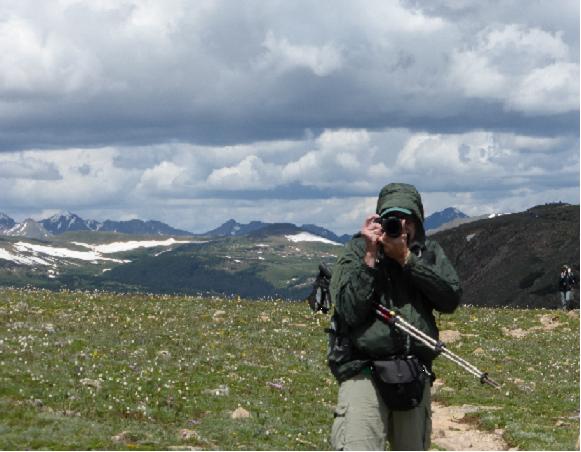 Join us for a tour of the best mountain scenery and animals from mountain ranges all over the northeast mountains, Utah, Colorado, Arizona, and the Sierras. Plus from travels outside the US to the Dolomites, New Zealand, Patagonia and elsewhere.
Join us for a tour of the best mountain scenery and animals from mountain ranges all over the northeast mountains, Utah, Colorado, Arizona, and the Sierras. Plus from travels outside the US to the Dolomites, New Zealand, Patagonia and elsewhere.
Alan has been the Albany Chapter's Outings Chair for 14 years and was ADK's Distinguished Volunteer in 2006. Among his hiking accomplishments: ADK 46er, Winter 46er, NE111, Adirondack 100 Highest and Catskill 100 Highest, Catskill 3500 Club and 3500 Winter, Catskill 200 Highest, 80/100 of NEHH.
He is also the author of The Catskill 67 - A Hiker's Guide to the Catskill 100 Highest Peaks under 3,500' and is working on two other hiking guides.
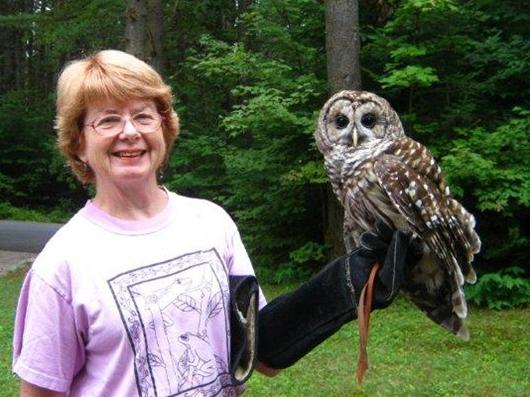 Meet Nancy Kimball and her educational raptors native to the Adirondacks; hear her stories and learn about her birds' unique characteristics.
Nancy is a wildlife rehabilitator with both NYS and federal licenses.
Meet Nancy Kimball and her educational raptors native to the Adirondacks; hear her stories and learn about her birds' unique characteristics.
Nancy is a wildlife rehabilitator with both NYS and federal licenses.
She has just published a book "Possums to Porcupines: the Wild Life of an Adirondack Rehabilitator" about her experiences caring for orphaned and injured mammals, songbirds, and raptors for the last 14 years.
She is a founding member of North Country Wild Care, a nonprofit network of home based wildlife rehabilitators, and belongs to the NYS Wildlife Rehabilitation Council and the Ntl Wildlife Rehabilitator's Assn. Anyone who wishes to bring an item from NCWC's wish list is encouraged to do so.
 Wildlife biologist Paul G. Jensen will present a talk co-sponsored by the Southern Adirondack Audubon Society and the Glens Falls-Saratoga Chapter of the Adirondack Mountain Club.
Wildlife biologist Paul G. Jensen will present a talk co-sponsored by the Southern Adirondack Audubon Society and the Glens Falls-Saratoga Chapter of the Adirondack Mountain Club.
Dr. Jensen will talk about the biology, management, and the current and historical populations and distribution of the Canada lynx, bobcat, and mountain lion in New York and the Northeast; he will also discuss how these species may fare in the future.
Dr. Jensen is a Senior Wildlife Biologist for the Division of Fish, Wildlife, and Marine Resources at the NYS Department of Environmental Conservation office in Warrensburg. His responsibilities include furbearer management and research, as well as wildlife management planning for Adirondack Forest Preserve units (e.g., Wilderness Areas and Wild Forest) in NYSDEC Region 5. He earned a Ph.D. in 2013 from the Department of Natural Resource Sciences at McGill University in Montreal, Quebec. His doctoral research focused on the ecology and management of American martens (Martes americana) in the Adirondack Park.
Before joining the DEC in 2003, Dr. Jensen worked in Alaska monitoring caribou and other large mammals on the Arctic Coastal Plain and conducted research with the New York Cooperative Fish and Wildlife Research Unit at Cornell University. He received his M.S. in Wildlife Ecology from the University of New Hampshire and his B.S. in Environmental Biology from SUNY College of Environmental Science and Forestry.
Please avoid wearing fragranced products to the program. Fragranced products trigger allergies, asthma, and migraines in others attending the event.
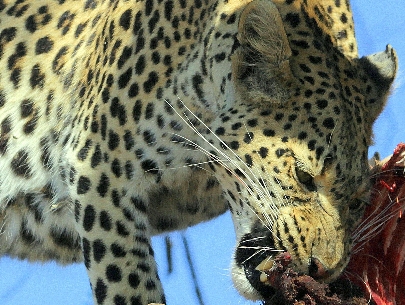 Africa: the place from which humans migrated to all other places on Earth, the home to vast herds of animals and the predators that depend
on them for life itself and the emerging vibrancy and vitality of people learning to live in the modernity of the twenty-first century.
Africa offers so many juxtapositions -- the old village hut adjacent to the new shopping mall, the placid flow of a river on a calm morning
jolted by the thunder of Victoria Falls, the nonchalance of Heuglin's Robin's song broken by the excitement of battle between lions and
cape buffaloes, and supermarket shelf space shared by the peanut butter and kudu stew.
Africa: the place from which humans migrated to all other places on Earth, the home to vast herds of animals and the predators that depend
on them for life itself and the emerging vibrancy and vitality of people learning to live in the modernity of the twenty-first century.
Africa offers so many juxtapositions -- the old village hut adjacent to the new shopping mall, the placid flow of a river on a calm morning
jolted by the thunder of Victoria Falls, the nonchalance of Heuglin's Robin's song broken by the excitement of battle between lions and
cape buffaloes, and supermarket shelf space shared by the peanut butter and kudu stew.
Africa is a fairy tale of contrasts that my wife Linda and I were so very fortunate to experience in June of 2013. We traveled through the southern African countries of Botswana, Zambia, Zimbabwe, and South Africa, spending day after day on safari with expert guides, sleeping in tented camps in the wilds of the bush, and hearing the nocturnal roars of lions close-by. All these experiences kindled a great animation in us and provided an unparalleled opportunity to photograph through the closing door of Africa's wilderness. Who knows how much longer the "not-so-dark" continent will remain pristine and rousing, even dangerous? From what we saw, it will not be any great expanse of time. The pressures of population and development are threatening to shut the portal forever. How grand, then, to have seen Eden before it is despoiled beyond recognition.
Bob and Linda are ADK members who have lived in Chestertown full-time since 2003 when they retired and moved north from the Big Apple. In New York City, Bob led hikes for the Long Island Chapter and visited the Adirondacks regularly. Just back from Central America, Bob and Linda's travels have taken them to all seven continents including the lands down under, Australia and New Zealand; Tahiti and Hawaii; Peru (the Amazon and Machu Picchu); the Galapagos and Easter Island; Antarctica, including South Georgia Island; Chile and Argentina (including Patagonia and Tierra del Fuego); India and Vietnam; Cambodia's Angkor Wat; Norway's Arctic Svalbard; Greenland and Iceland; the remote islands of the Atlantic Ridge: Tristan da Cunha, St. Helena (where Napoleon died), Ascension; and more, like Alaska and the rest of wonderful North America. This is a resume to which they will continue to add bucket-list destinations until their bucket runneth over!
 Offa's Dyke National Walking Trail with Bill Schwartz and Charlotte Smith
It is different hiking in the United Kingdom--often, the designated routes of the National Trails cross working farms
instead of forests. Trails have stiles and gates, hikers can have encounters with sheep and cattle.
Offa's Dyke National Walking Trail with Bill Schwartz and Charlotte Smith
It is different hiking in the United Kingdom--often, the designated routes of the National Trails cross working farms
instead of forests. Trails have stiles and gates, hikers can have encounters with sheep and cattle.
Join Bill Schwarz and Charlotte Smith on their guided, six-day tour of Offa's Dyke Path last May; Offa's Dyke Path is located along the Welsh/English border.
Offa was King of Mercia, a small kingdom before England was united. Around A.D. 800, he ordered a 77-mile rampart be built to divide his realm from the Welsh. Some sections of the Path, which follows the defensive bank, still form the Wales/England border today.
The Path has stunning landscapes (Wales ain't flat!), historic canals, lime works, and castles. And don't forget the tearooms and pubs!
 In May, Chapter member and former Treasurer, John Schneider, traveled to South America. After eight flights
totaling about 15,000 miles, he visited three more places he had wanted to see since childhood: Lake Titicaca
and Machu Picchu in Peru and Easter Island in Chile.
In May, Chapter member and former Treasurer, John Schneider, traveled to South America. After eight flights
totaling about 15,000 miles, he visited three more places he had wanted to see since childhood: Lake Titicaca
and Machu Picchu in Peru and Easter Island in Chile.
Lake Titicaca, between Peru and Bolivia, is the highest navigable lake in the world (12,500 feet above sea level) and the third largest lake in South America. He visited the famous floating reed islands and learned how they are created and maintained and took a ride on one of the reed boats; to get to the islands, these boats were the basis for Norwegian explorer Thor Heyerdahl to make a reed raft (Kon Tiki) in the 1950s to travel to Polynesia.
Schneider toured the Inca ruins in and around Cuzco, the capital of the Inca Empire. Then he went on a four-day hike on the Inca Trail to Machu Picchu, one of the sacred sites of the Incas. On this trek were 24 hikers, three guides, and 42 porters, ranging in age from 19 to 72. The group was totally self-contained and had hot meals for breakfast, lunch and dinner. We traveled over three mountain passes, the highest at over 14,000 feet above sea level. Our evening campsites were at high elevation overlooking beautiful valleys. The Incas knew how to build their trails - five hundred years later we were hiking on their original trail. The visit to Machu Picchu, one of the Inca Empire's most sacred places, was like many other grand places I have visited ... the Grand Canyon and Yosemite quickly come to mind. In person Machu Picchu is much more than its photographs show. Machu Picchu is a most mystical place.
Then we flew to Easter Island, about 2,400 miles off the coast of Chile. This is a relatively small volcanic island - triangular in shape and only about 10 miles per side. Here is where the native population created large statues for religious celebration. We spent four nights at Easter Island and saw just about all of the important sites on the island. Of the more than 1,000 statues made by the native population, only about 400 were brought out of the quarry and stood upright. Toward the end of the statue-building period, the native civilization imploded and all of the statues were tipped over as the tribes fought among each other. The natives then began to focus away from the statues. They adopted a birdman cult - the leader of the tribe with the swimmer who gathered the first bird egg of the season from a small offshore island became the leader of all tribes for one year. When Europeans "discovered" this island, the population had declined from about 10,000-12,000 to about 3,000. Easter Island is a fascinating place.
Retired since 1997, John Schneider has traveled extensively both in the United States and abroad. Among his many travels, he has twice visited Antarctica and the Galapagos Islands, taken river cruises in Europe and China; spent 33 days in South Africa, Swaziland, and Namibia, taken a 12-day train ride across Russia, traveled up the middle of the Atlantic on a 32-day ocean voyage, witnessed three total eclipses of the sun in the Caribbean, Mediterranean, and Western Pacific; and so far has visited 49 of the 50 states where he has hiked in about 38 of the major national parks. He has been to 52 countries and destinations recognized by the Travelers' Century Club. His bucket list continues to increase and he is looking forward to visiting Australia, his seventh continent, in the near future. He has registered for a hiking trip to the Patagonia region in 2016.
 Most would agree that the High Peaks of the Adirondacks enjoy the spotlight when it comes to discussions among outdoor
enthusiasts from our area. Let's try something different by letting chapter member Peter Fedorick take us on a pictorial
journey to some other Adirondack gems in his presentation "Adventures in and around the Adirondacks."
Most would agree that the High Peaks of the Adirondacks enjoy the spotlight when it comes to discussions among outdoor
enthusiasts from our area. Let's try something different by letting chapter member Peter Fedorick take us on a pictorial
journey to some other Adirondack gems in his presentation "Adventures in and around the Adirondacks."
Fedorick will show us often-overlooked images of biking, hiking and paddling that are in our backyard, such as paddling Lens Lake, visiting the Tupelos of Lincoln Mountain State Forest, and biking the back-roads of Shushan.
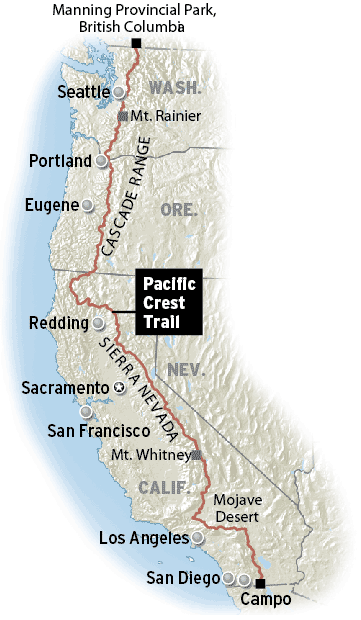 Chapter member Steve Mackey hiked the entire 2,668 miles of the Pacific Crest Trail this past summer. He started
April 8, 2014, in Campo, California (touching the US/Mexican border), and finished September 8, 2014 near Manning
Provincial Park, (touching the US/Canadian Border). The trail is closely aligned with the highest portions of the
Sierra Nevada and Cascade mountain ranges.
Chapter member Steve Mackey hiked the entire 2,668 miles of the Pacific Crest Trail this past summer. He started
April 8, 2014, in Campo, California (touching the US/Mexican border), and finished September 8, 2014 near Manning
Provincial Park, (touching the US/Canadian Border). The trail is closely aligned with the highest portions of the
Sierra Nevada and Cascade mountain ranges.
The hike included: 700 miles of desert in southern California, with US border patrols, rattlesnakes, wind farms, desert springs, water caches, and sun umbrellas; 1,000 miles in mid/northern California, with snowcapped volcanoes, High Sierra snowfields, dangerous river crossings, mosquitoes, and forest fires.; 400 miles in Oregon, which included giardia, Crater Lake, Lava fields, and wild flowers; 500 miles in Washington that had a town that can only be reached by hiking or by ferry. Mackey went through towns so small, that all the resupplies had to be sent to post offices. Come hear of his incredible journey!
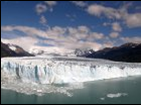
Enjoy stunning landscapes, huge waterfalls, active geysers, glaciers, volcanoes, and rocky coastlines. Here's a country where you can have one foot in North America while the other foot is in Europe. Don't miss it!

The presentation will include: An overview of alternate fuel vehicles (hydrogen, electric, naturalgas); past, present, and potential future of EVs (history, technology, legislation); how EVs work (the engineering); facts vs. myths; global questions and perspectives; current EV options (e.g. Leaf (Nissan), Volt (Chevrolet), I3 (BMW), Tesla; Buying or Leasing an EV (what it means to you); and personal experiences/insights.
Paul is a licensed professional engineer. He has a B.S. in Mechanical Engineering from Manhattan College and an M.S. in Mechanical Engineering from RPI. He has over 30 years experience as an engineering manager, including 25 years with GE.
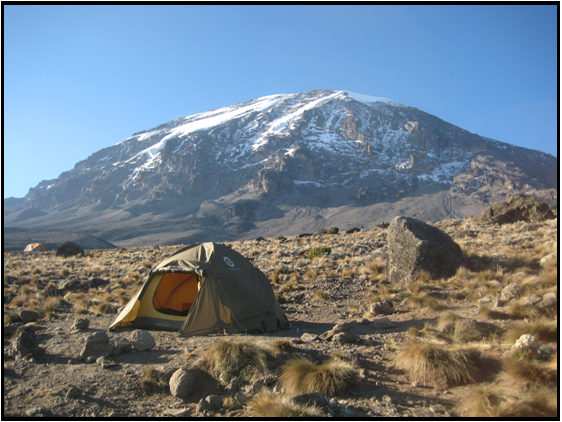
Don Berens has been a member of ADK since the 1970s and lives in Latham, NY. He first finished his Adirondack 46 in January 1982 and has done a dozen more rounds since then. He has completed climbs of the Catskill 35, the Northeast 113, and the high point of each of the fifty US states. He has climbed over 15,000 feet on three continents and bicycled from Los Angeles to Boston. Don regularly leads hikes and bike trips for the Albany Chapter of ADK. He is a lawyer retired from NYS service, married with two adult children and a grandchild on the way.
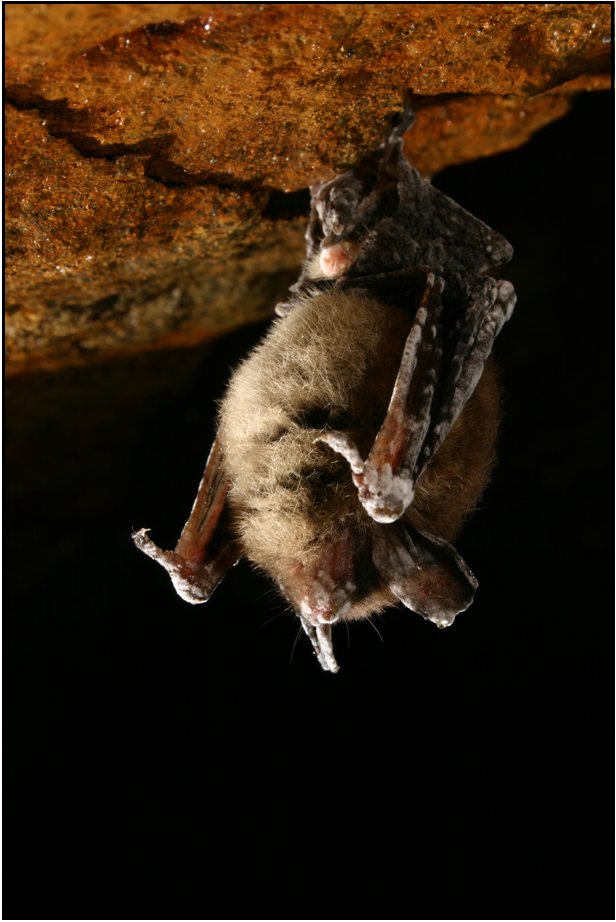
At this program, we will discuss the history and current status of the disease and efforts that are underway to combat it with Al Hicks, retired NYS Wildlife Biologist.
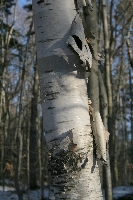
Discussion topics will also include uses of the bark of the white birch by woodland Native American cultures, as in the Adirondack region, as part of traditional cultural handcrafts. Topics will include needs for increased environmental and cultural awareness.
Tom Mowatt is an experienced environmental educator, Adirondack hiking and camping guide, naturalist-artist and traditional craftsman, living in a historic 1910 log cabin overlooking southern Lake Champlain.
Previously, Mowatt was adopted into the Great Lakes Ojibwa tribe and is respected in the First Nations culture as a traditional craftsman and researcher of medicinal ethno-botany. He has also worked for the U.S. Forest Service as a forest firefighter and arson investigator, and was often requested by law enforcement agencies to work with search dogs in various capacities. Mowatt teaches cellular biology and criminalistics (forensic science) at SUNY Adirondack.
This is a joint presentation with the Southern Adirondack Audubon Society.

Dr. Stephen Danna is Dean of the SUNY Plattsburgh at Queensbury Branch Campus. He has 25 years experience in teaching and administration, and prior to that, worked with the National Oceanic and Atmospheric Administration and U.S. Naval Oceanographic Office as an oceanographer. A middle school guest lecturer at a school assembly in Bay St. Louis, MS., led him to discover a hidden passion for education. A year later, he was teaching physics and chemistry to high school students in Glens Falls, N.Y. Dr. Danna has received teaching fellowships from Princeton University, University of Wisconsin-Madison, and Drew University, and was honored in 1997 with the National Science Teachers Association's Exemplary High School Science Teaching Award. He maintains an active blog on education and leadership topics ( racetothetopdannas.wordpress.com ), and has published papers with the National Staff Development Council, National Science Teachers Association, Journal of School Leadership, and Phi Delta Kappan.
In Dr. Danna's words, "I am deeply passionate about climate change. I understand the science, and it is frightening. However, I am a hopeful individual and believe it is within our power to change the carbon conversation and reverse the ominous trends presently occurring in our environment. There is a lot at stake, and this generation and generations to come depend on us to do the right thing.

 If you think you have to travel to the far corners of the earth to explore the beauty of the natural world, think again!
Birds, flowers, butterflies, reptiles and amphibians abound in New York's Capital Region and just beyond. Join Denise Hackert-Stoner
and Scott Stoner of Naturelogues for this program highlighting the beauty of nature we can find right in our own backyards!
If you think you have to travel to the far corners of the earth to explore the beauty of the natural world, think again!
Birds, flowers, butterflies, reptiles and amphibians abound in New York's Capital Region and just beyond. Join Denise Hackert-Stoner
and Scott Stoner of Naturelogues for this program highlighting the beauty of nature we can find right in our own backyards!
The award-winning nature photography of Scott Stoner and Denise Hackert-Stoner of Naturelogues has been exhibited in many galleries throughout New York's Capital region. Their work has appeared in numerous publications including Birder's World, New York State Conservationist and the new book, "New York Wildlife Viewing Guide.€ They offer natural history slide programs for adults and children as well as sales of their nature photography and note cards. Visit them at naturelogues.com or on Facebook.
Just e-mail some of your favorite photos from ADK outings, your own outdoor adventures during the year, or flora/fauna shots to Steve at smackey33@verizon.net .
Please limit your submissions to 5 to 10 photos. We hope to see you there to tell us about your adventures!

During the eight days on the ship, passengers went ashore at least twice daily, and three times on a few days. These shore excursions included nature walks, snorkeling, swimming at various beaches, and hiking up to the summit cone of a volcano. They saw the varied animal life of these islands made famous by Charles Darwin. This included: blue footed boobies, red footed boobies, albatrosses, frigate birds, gulls, pelicans, flamingos, herons, doves, sea lions, orcas, Sally Lightfoot crabs, land iguanas, marine iguanas, and Galapagos penguins - the most northern penguins in the world. One of the many highlights of the trip included observing the giant Galapagos tortoises and "Lonesome George,€ the last of his species.
Come enjoy the sights of one of the most exotic and enchanted places on this great earth. After a 32 year career in education, John retired in June 1997. Since then he has traveled extensively in the United States and abroad. In two separate two-month long trips in 1997 and 1999, he visited and hiked in more than 20 national parks. He has hiked from A (Acadia) to almost Z (Yosemite) including the Grand Canyon, Yellowstone, Grand Teton, Rocky Mountain, Glacier, Badlands, Olympic, Redwood, Sequoia, Arches, Canyonlands, Bryce, and many other national parks. He has also hiked to the top of 14,500 foot Mount Whitney, the highest point in the contiguous United States. In 2007 he took a 14,000 mile vehicle trip to Alaska and back and did extensive hiking in a number of the Alaska's National Parks. At this point he has visited 38 of our major national parks.
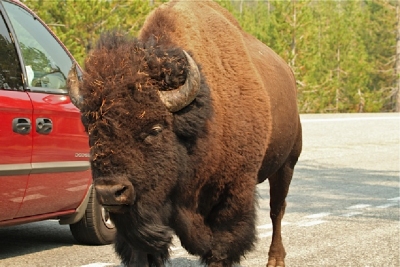 Motivated by expiring air miles, inspired by Ken Burn's National Parks documentary and other ADK members national
parks trips, ADK members Mo, Jim & Gen Coutant visited our country's first National Park - Yellowstone and
also the Grand Tetons in August 2012.
Motivated by expiring air miles, inspired by Ken Burn's National Parks documentary and other ADK members national
parks trips, ADK members Mo, Jim & Gen Coutant visited our country's first National Park - Yellowstone and
also the Grand Tetons in August 2012.
If you've been there, come join us to relive the experience. If not, just come and enjoy our photos set to music. Yellowstone is so diverse that even if you've been there you might not have seen all its marvels. We didn't either! Old Faithful is usually the first thing that comes to mind when Yellowstone is mentioned. That's certainly very impressive, but that's just one of many wonders. You'll see the Grand Canyon of Yellowstone with its amazing waterfalls and steep gorge walls, bubbling mud pots, and hot springs with thermophilic bacteria and algae mats of varying colors, just to name a few. We kept imagining what it would have been like to discover this area as an explorer; no one believed them when they first sent back stories!
Of course, the other thing you think about when you hear Yellowstone is animal sightings. That was definitely one of the best parts of the trip.
Yellowstone is on top of a huge super volcano, which is responsible for most of its amazing geothermal wonders and natural beauty. This area is very unique not only in the States, but also throughout the world. It contains half of the earth's geothermal features . some 10,000 of them, including more than 300 geysers! It's no wonder it was the first area to be protected as a National Park in 1872.
If you've ever seen one of those shows about top 10 ways mankind will get wiped out, Yellowstone exploding again is on the list (it's exploded 3 times in the last 2.1 million years). But we're not losing any sleep about it and we hope you don't either. But, just in case, plan your trip now! You never know!
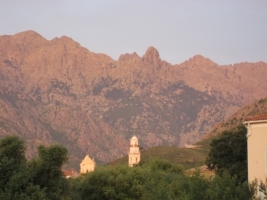 The French call Corsica "The Isle of Beauty." Trekkers call the 118-mile GR20 trail over Corsica's rocky central
mountains the toughest long-distance hiking trail in Europe. ADKer Don Berens will present an illustrated talk about
his 2010 trip to this ruggedly scenic corner of the Mediterranean world.
The French call Corsica "The Isle of Beauty." Trekkers call the 118-mile GR20 trail over Corsica's rocky central
mountains the toughest long-distance hiking trail in Europe. ADKer Don Berens will present an illustrated talk about
his 2010 trip to this ruggedly scenic corner of the Mediterranean world.
Don Berens has been a member of ADK since the 1970s and now lives in Latham, NY. He first finished his Adirondack 46 in January 1982 and has done a dozen more rounds since then. He has completed climbs of the Catskill 35, the Northeast 113, and the high point of each of the fifty US states. He has climbed over 15,000 feet on three continents and bicycled from Los Angeles to Boston. Don regularly leads hikes and bike trips for the Albany Chapter of ADK. He is a lawyer retired from NYS service, married with two adult children and a grandchild on the way.
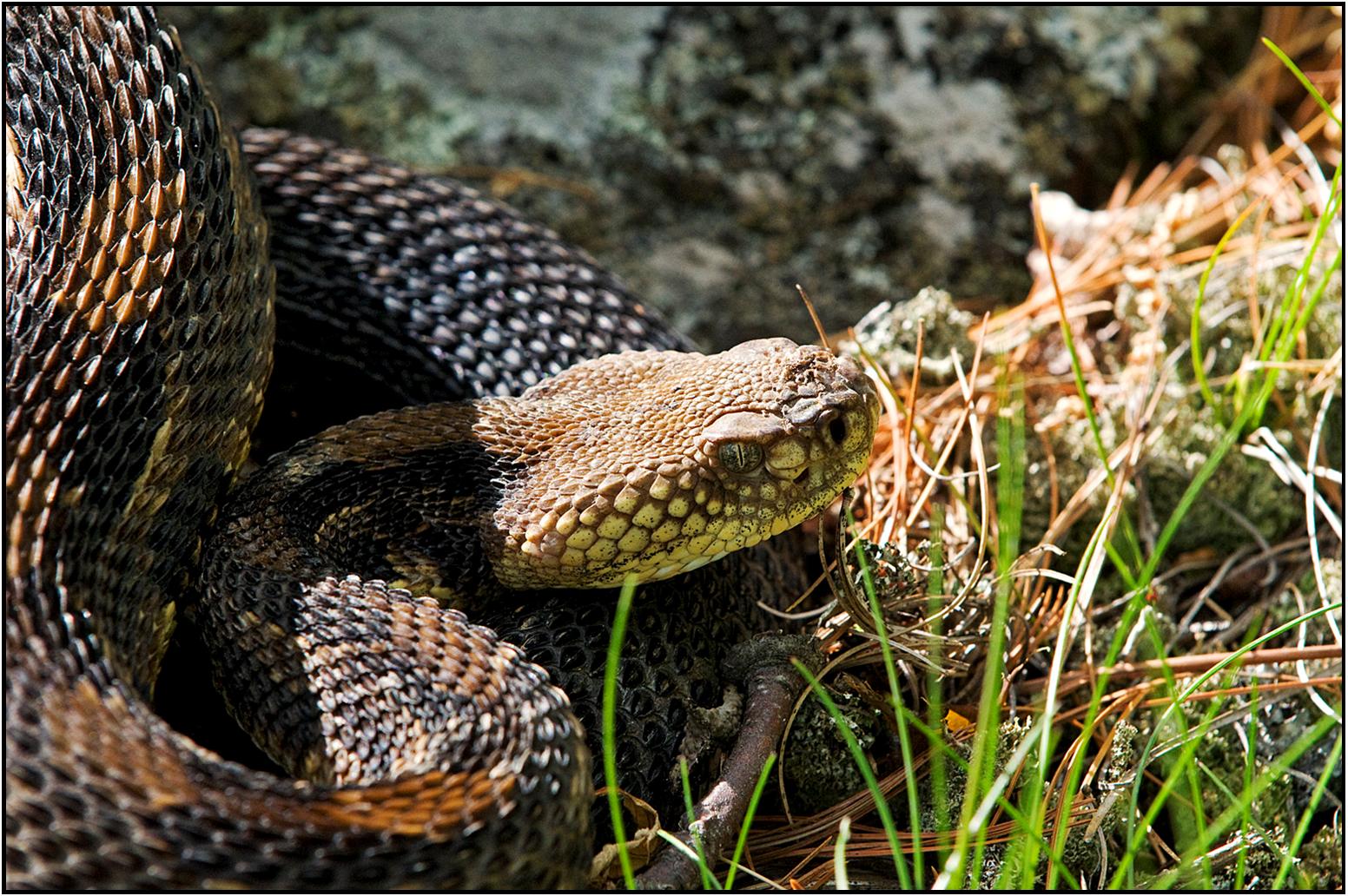
In New York, Timber Rattlesnakes are distributed among scattered overwintering dens in over 20 counties. Many populations were extirpated or depleted throughout the state over the past two centuries. The species was listed as "threatened" in 1983 and has been fully protected under New York State law for the past 25 years. In the northeastern sector of the state, rattlesnake dens represent ancestral populations which have been in continuous existence for approximately 7,000 years following climatic warming and withdrawal of the most recent glacial ice sheet. Once colonized, each den enhances winter survival and maintains a stable population.
Timber Rattlesnakes hibernate through the winter, October through April (7 months). After emerging, the active season lasts from May through September (5 months). Each spring, the snakes make long-distance (1 to 3-mile) migrations between their winter dens and their summer foraging grounds. In its deciduous forest habitat, the Timber Rattlesnake is an important predator of small mammals and thus plays an important role in the natural food web.
Over the past three decades, the speaker's field study has revealed new information on the Timber Rattlesnake's life history. It is a long-lived species; recent recaptures in 2012 of snakes initially marked as adults over 30 years ago show that the maximum confirmed lifespan exceeds 40 years. Females do not reproduce for the first time until an age of about 9 years. Adult females have a low birthing frequency, reproducing only at 3-year and 4-year intervals, on average. The estimated survival rate is about 65% in the first year, while adults survive at about 90% per year.
In the summer mating season (July through August), male rattlesnakes move often and therefore may come into contact with humans at homes and campsites. On a hiking trail on a warm summer day, encountering a rattlesnake is an uncommon but memorable outdoor experience. The snake's behavior contributes to the low danger of rattlesnake bite to hikers while they are in rattlesnake country. Shy and retiring, timber rattlesnakes normally are not aggressive and will attempt to escape. However, if provoked or disturbed, a Timber Rattlesnake may hold its ground, coiled and rattling, until the human intruder disappears. Common-sense precautions for hikers are simple: enjoy seeing a live rattlesnake, perhaps photograph it, then leave it alone and continue hiking. First-aid and medical approaches to venomous snakebite will be discussed.
 David Avigdor, Chapter member since 1986, is an avid hiker, backpacker and paddler who will discuss his trips
and share with us his slides and how the images were taken. About five years ago, Avigdor added a digital camera
to his outdoor gear, and has been creating both 'travel' and fine art images of his ventures. He most enjoys
photographing water; his images include whitewater rivers, waterfalls, the ocean, as well as peaceful Adirondack
waters such as Cedar River Flow and Paul Smiths area paddles.
David Avigdor, Chapter member since 1986, is an avid hiker, backpacker and paddler who will discuss his trips
and share with us his slides and how the images were taken. About five years ago, Avigdor added a digital camera
to his outdoor gear, and has been creating both 'travel' and fine art images of his ventures. He most enjoys
photographing water; his images include whitewater rivers, waterfalls, the ocean, as well as peaceful Adirondack
waters such as Cedar River Flow and Paul Smiths area paddles.
Recently, Avigdor spent 12 days in Cuba at a photography workshop, which qualified as a legal visit to that country as a "people-to-people exchange." He will include images of Havana, the colonial village of Trinidad, the tobacco growing region of Vinales, and of the people of this Caribbean country. Also, Avigdor will share his impressions of being in a Communist country, and the Cuban culture.
Avigdor has photographed the Adirondacks, Acadia National Park in Maine, the New Jersey coast, Nova Scotia, the Caribbean island of St. Lucia, and the wilds of Manhattan and Brooklyn. He recently spent a weekend in Rickett's Glen State Park in Pennsylvania, which is home to more than 30 magnificent waterfalls, many of which he photographed. Avigdor paddles flatwater with the Chapter, as well as whitewater with the Schenectady Chapter. He practices law (www.adirondacklaw.com) in the Adirondack Park, in Lake Luzerne.
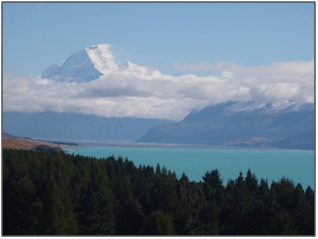 Long-time ADK member Judy Halstead will give a photo presentation and talk on the three-week-plus trip she and her husband,
Jonathan Feinberg, took recently to New Zealand. Their many day hikes included the Tongariro Alpine Crossing
(Tongariro National Park) where they encountered epic views of volcanic mountians Mt Tongariro and Mt Ngauruhoe, which,
together, played Mt Doom in Return of the King: Lord of the Rings. Unique sights on this world-renowned trek include
Red Crater and various lava formations. On other hikes, known as "tramps" in New Zealand, they travelled through rainforests
to glaciers, waterfalls or lakes.
Long-time ADK member Judy Halstead will give a photo presentation and talk on the three-week-plus trip she and her husband,
Jonathan Feinberg, took recently to New Zealand. Their many day hikes included the Tongariro Alpine Crossing
(Tongariro National Park) where they encountered epic views of volcanic mountians Mt Tongariro and Mt Ngauruhoe, which,
together, played Mt Doom in Return of the King: Lord of the Rings. Unique sights on this world-renowned trek include
Red Crater and various lava formations. On other hikes, known as "tramps" in New Zealand, they travelled through rainforests
to glaciers, waterfalls or lakes.
 Judy and Jonathan's paddling trips included the spectacular secluded beaches and islands of Abel Tasman National Park
and views of vineyards and mountains from Lake Wanaka, New Zealand's fourth largest lake. The largest and most isolated
of the 14 national parks in New Zealand, Fiordland National Park, a World Heritage Site, has truly stunning scenery.
Unique fauna, such as the threatened Fiordland crested penguin, inhabit the fiords, rocky coasts and towering cliffs
of Fiordland National Park. Jonathan's favorite part of the trip was paddling amongst the waterfalls, islands and
clouds of mist in Doubtful Sound. Judy will also share photos of New Zealand's tallest mountain, Aoraki Mount Cook
(on a rare clear day!) and report on the status of Christchurch a year after the February 2011 6.3 earthquake.
Judy and Jonathan's paddling trips included the spectacular secluded beaches and islands of Abel Tasman National Park
and views of vineyards and mountains from Lake Wanaka, New Zealand's fourth largest lake. The largest and most isolated
of the 14 national parks in New Zealand, Fiordland National Park, a World Heritage Site, has truly stunning scenery.
Unique fauna, such as the threatened Fiordland crested penguin, inhabit the fiords, rocky coasts and towering cliffs
of Fiordland National Park. Jonathan's favorite part of the trip was paddling amongst the waterfalls, islands and
clouds of mist in Doubtful Sound. Judy will also share photos of New Zealand's tallest mountain, Aoraki Mount Cook
(on a rare clear day!) and report on the status of Christchurch a year after the February 2011 6.3 earthquake.
Judy, an ADK member since 1980, is Professor of Chemistry at Skidmore College. In addition to chemistry, Judy also teaches environmental studies courses. She and her research students recently concluding the study, A Statistical Analysis of Water Chemistry
 Join us for a program with the Southern Adk Audubon Society for a flora and fauna program prepared by ADK's Education Dept.
This slide show will introduce different ecosystems and what can be found in them. The interrelationships of these plants
and animals help sustain the community as a whole.
Join us for a program with the Southern Adk Audubon Society for a flora and fauna program prepared by ADK's Education Dept.
This slide show will introduce different ecosystems and what can be found in them. The interrelationships of these plants
and animals help sustain the community as a whole.
Following the program, a few local shots of wildflowers and backyard birds will be used to test your knowledge. Come see if you're smarter than a 4th grader (Chapter Chair Coutant's daughter, Genevieve)!
 Joyce Miller, professor of library science at SUNY Adirondack, will present a photographic slide of Madagascar,
which is located off the southeast coast of Africa, and offers hundreds of unique bird, plant and animl species.
Miller spent a month traveling 3,000 miles around the country in August of 2010, in pursuit of rare birds and wildlife.
She will show photos and talk about the island. She saw dozens of birds, several types of lemurs, bizarrely huge insects,
the famous spiny desert, tropical beaches and rocky coastlines. She also saw the country's tremendous environmental
degradation, political strife and poverty.
Joyce Miller, professor of library science at SUNY Adirondack, will present a photographic slide of Madagascar,
which is located off the southeast coast of Africa, and offers hundreds of unique bird, plant and animl species.
Miller spent a month traveling 3,000 miles around the country in August of 2010, in pursuit of rare birds and wildlife.
She will show photos and talk about the island. She saw dozens of birds, several types of lemurs, bizarrely huge insects,
the famous spiny desert, tropical beaches and rocky coastlines. She also saw the country's tremendous environmental
degradation, political strife and poverty.
Miller has traveled to 23 countries on six continents, primarily in search of birds and other wildlife. A birder for about 30 years, she is a long-time member of Southern Adirondack Audubon Society, Hudson-Mohawk Bird Club, and the N.Y.S. Ornithological Association.
Miller earned a master of library science degree from University at Albany as well as graduate degrees from SUNY Plattsburgh and St. Michael's College in Vermont. She has been awarded the SUNY Chancellor's Award for Librarianship and the President's Award for Excellent in Teaching. Previously, she was a founding staff member of The Chronicle newspaper in Glens Falls. She is a native of Staten Island.
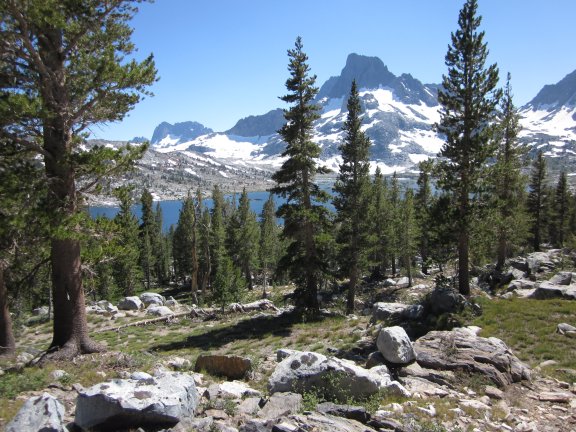 The John Muir Trail ("JMT") passes through what many backpackers agree is the finest mountain scenery in the US.
The 211 mile JMT travels end-to-end through three National Parks - Yosemite, Kings Canyon, and Sequoia - traversing
the Sierra Nevada Mountains of California. The trail stretches from Yosemite Valley, intersects and follows, the Pacific
Crest Trail, ending on the summit of Mount Whitney, (the highest peak in the continental United States). The trail
crosses six mountain passes in excess of 11,000 feet, and has a vertical gain of just over 46,000 feet.
Perhaps even finer than the scenery, however, is the Sierra's legendary summer weather: blue skies and consistent sunshine,
day after beautiful day.
The John Muir Trail ("JMT") passes through what many backpackers agree is the finest mountain scenery in the US.
The 211 mile JMT travels end-to-end through three National Parks - Yosemite, Kings Canyon, and Sequoia - traversing
the Sierra Nevada Mountains of California. The trail stretches from Yosemite Valley, intersects and follows, the Pacific
Crest Trail, ending on the summit of Mount Whitney, (the highest peak in the continental United States). The trail
crosses six mountain passes in excess of 11,000 feet, and has a vertical gain of just over 46,000 feet.
Perhaps even finer than the scenery, however, is the Sierra's legendary summer weather: blue skies and consistent sunshine,
day after beautiful day.
This past summer, Chapter members Jean Holcomb and Steve Mackey spent about three weeks thru-hiking the JMT. They were split into two groups of people they had met when hiking the Appalachian Trail. The two groups started in different spots due to the difficulty of getting permits. They had a wide variety of hiking speeds, so we were often spread out in even smaller groups. All but one of us was able to finish. The views from the mountain passes, and abundance of pristine alpine lakes, were simply spectacular. The winter of 2010-11, dumped significant snow in the Sierra Nevada's, so the snow lingered all through the summer and fall. Holcomb and Mackey crossed many snowfields, and had the advantage of snow capped mountains in all of their pictures. Join us for pictures of the rugged mountains, pristine lakes, and abundant wildflowers.
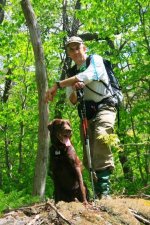
The ADK is publishing Alan's new book, The Catskill 67 - A Hiker's Guide to the Catskill 100 Highest peaks under 3,500'. Alan will have beautiful color photos and speak about places and things few people have seen. He is one of only a small handful who have climbed both the Adirondack and Catskill 100 highest summits.

They also mountain biked through the high mountain village of Hulack, day-hiked the salt valley of Maras (see NatGeo) and to nearby high ridges to see Inca quarries, burial mounds and observe Condors. After these adventures and to acclimate to the 10,000 ft-elevation, they stepped off on a 4-day guided hike of the Inca trail; a 35 km footpath through the Peruvian Antiquities Zone.
Amongst glaciered peaks, the trail crossed several high passes ("Dead-Woman's Pass" at 14,000 ft was the highest) and through arid, alpine and jungle climes. The trail terminates at the "lost" city of Machu Picchu. They have prepared a PowerPoint slide show from their travel pictures and are very pleased to share them with us.

The screening will be followed by a conversation about the current status of the NYS legislative process and hydrofracking. Neil Woodworth, ADK's Executive Director, and Sean Mahar, Director of Government Relations and Communications from Audubon New York, will speak on the topic and are available to answer your questions!
2011-11-30: A photographic journey to Nepal by Ron Lester 7 pm at Saratoga Library

Presentation by Ron Lester at 7 PM on November 30 at the community room of the Saratoga Public Library.
In 2007, Ron Lester ventured to Nepal solo. In April of 2011, Lester joined a group back into the same region for 16 days of trekking in the Khumbu region that leads up to Mt. Everest base camp.
They split into two separate groups on Day 3 of the trek, and joined back together on Day 10. Lester's group headed up the Gokyo Valley, to among other things, attempt to climb the 20,000-foot trekking peak Lobuche East. This is a climb that requires basic glacier mountaineering skills, and lots of desire. En route over the 17,600' Chola Pass, they were thrilled to encounter fresh tracks of the rare Snow Leopard.
They soon rejoined group 2, who had taken a bit more of a relaxed pace up the Khumbu Valley with a side trip up the 18,000' Chukking Ri. Then it was on up the famous trekking hill Kalapatar at 18,200' with its glorious panorama of the fantastic Himalaya Mountains including Mt. Everest, up close.
After a quick visit to Mt. Everest base camp, where climbs of the world's highest peak begin, they started the five-day hike back to the town of Lukla for their return flight to Kathmandu, Nepal's capital city. A documentary show on the History Channel rated Lukla as the world's #1 most dangerous airport. Lester's photographic presentation will have plenty of unparalleled jaw-dropping mountain scenery, a high altitude glacier climb, tea house and tent life, with scenes of the native Sherpa people who were his hosts.
And of course all of the yak trains, suspension bridges, and humble Sherpa porters who carry punishing loads that make it possible for groups to travel in relative comfort. You have to see "Generator Man" with his 243-pound load at 17,000 ft. plus. Lester will finish up with some shots of third world life and tourist venues around Kathmandu.
In his presentation, Lester will relive the adventures of the trip, sharing the great joy, awe, and misery that are found in the high mountains.
2011-09-28: Explore the North Country Scenic Trail
This program will be held at the Saratoga Springs Public Library communtiy room on Wednesday at 7 pm.
Mary Coffin, chair of North Country Trail team from Onondaga Chapter of ADK,
will give us a presentation on the North Country National Scenic Trail in the Adirondacks.
The presentation will be a mix of maps and pictures Mary has taken while scouting sections of the trail.
We will learn about this 4,600-mile and seven-state National Scenic Trail and the planned route
within the Adirondack Park as the trail makes its way from Black River Wild Forest to Crown Point.
About 147 miles are planned for the Park with about half on existing trails.
2011-05-25: Grand Canyon, Monument Valley & other great western places
This program will be held at the Saratoga Library on Wednesday May 25, 7 pm. It has been rescheduled from the original date of May 19 that was reported in the Newsletter.
Last year Schneider purchased a motor home located in Yuma, Arizona. He and his wife, Eileen,
took two weeks to bring the motor home back to Saratoga Springs. Their cross-country trip took
them to the Grand Canyon, Arizona (both South and North Rim); Monument Valley, Utah; Durango,
Colorado; Great Sand Dune National Park, Colorado; and Tall Grass Prairie National Preserve, Kansas.
Come join Schneider as he takes you on two scenic rides of more than 50 miles along the South
and North Rim of the Grand Canyon, hikes into the Canyon from the North Rim, and takes a day
hike on the more than 800-mile long Arizona Trail. On a half-day tour he visits Monument Valley.
It has some of the most recognizable features in the country, and includes scenes from many movies,
beginning with 'Stagecoach'. the 1939 John Wayne western.
Come ride the Durango-Silverton Narrow Gauge Railroad as it snakes and climbs its way along the Animus
River for 45 miles between Durango and the former mining town of Silverton, Colorado. Join along on a
visit to Great Sand Dunes National Park, a park in a setting that does not seem real.
On all of his previous western trips, Schneider simply drove through the plains without taking in their
unique charm. Join him as he actually stops and observes what the prairie looked like before it became
the breadbasket of the country. The Tallgrass Prairie National Preserve is a place that has grasses
reaching up to seven feet tall and root systems up to eight feet deep.
Although this trip was a lot shorter than his previous trips out west, the places he visited on this one
should again whet your appetite to visit the great scenic beauties of our country.
This program will be held at the Saratoga EMS Store in Wilton on Thursday April 21, 6:30 pm.
Join us at Eastern Mountain Sports (EMS) in Saratoga to continue our outdoor gear education. Whether you are looking to "upgrade" your gear or want to know what is needed to begin trying a new activity, come learn from your fellow outdoors people and the EMS staff. Here's a chance to get your kayak questions answered as well as whether you should pick up a pair of hiking poles?
• What type of kayak/paddle/lifejacket is best for me?
• How do I get into a kayak without tipping.from a dock or beach?
• How many paddling strokes are there and when do I use them?
• How come I get water in my kayak while paddling?
• What do I do if I tip over?
• Do I need a water pump? Dry bag?
• What types of racks are out there to transport my kayak? How do I tie it on?
2011-03-24: Mackey's Bike Trip Across America at 7 pm Crandall Lib in Glens Falls
View their email sent as they traveled across the country.
Chapter members Steve & Licia Mackey flew to California at the end of this past September to bicycle back with their
daughter Heather who worked for the summer with the California Forest Service. Heather had a car out there,
so they drove it back at the same time in order not to carry gear or food on the bikes.
They followed a route created by the Adventure Cycling Association called the Western Express and the Trans America. It follows regular
roads but tries to stay in rural areas with less traffic. (The map makers rarely took into account hills, or whether
you were actually going east - west). The route also intersected with many National Parks, National Monuments and
Scenic Byways. The Mackeys bicycled for about two months and rode almost 3,600 miles! They traversed nine states
and climbed six major mountain passes. They had snow or hail almost every time they climbed a major pass, but other
than a couple of wasted half days, they were always able to continue. All kinds of wildlife were seen and the scenery
was breath-taking.
2011-02-17: Behind the Scenes in Antarctica Slideshow - Crandall Library in Glens Falls
In the winter of 2008-2009, Mary Brown worked in Antarctica as a Meteorological Technician. She was assigned
to a Deep Field Camp, Siple Dome. Mary describes her experience as that of an ultimate winter camping trip!
As science support, she worked to keep the scientists in the field working happily.
This slide show presentation
will explain what it is like to work in Science Support. In order for the scientists to do their thing lots has
to happen €” food must be cooked, planes must be flown, supplies must be delivered, and weather reports sent.
This is not a wildlife presentation from a visitor or tourist, but an inside view of how the continent works
to accomplish the important science that goes on in Antarctica.
2011-01-20: Safety First on Winter Outings - Hiking Gear and Safetyat EMS
This program will be held at the Eastern Mountain Sports store, Route 50, Saratoga Springs.
at 7 pm on Jauary 20.
Join us at Eastern Mountain Sports in Saratoga for your chance to learn about what you need to keep you
safe on winter outings! From your base layer to your snowshoes and your pack! Beginners, as well as seasoned
hikers are encouraged to join as EMS staff provides in depth knowledge of the how-to's of winter outings!
2010-09-30: Jean Holcomb to recount Appalachian Trail at Saratoga Lib
In June of 2009, Jean Holcomb, long time resident of Saratoga Springs and hike leader for the
Glens Falls/Saratoga Chapter of ADK began an epic journey to hike the entire Appalachian Trail.
It wasn't supposed to happen that way. Jean's original plan was to start in April but a torn rotator
cuff and frozen shoulder intervened and almost deep-sixed her hiking plans. After much painful physical
therapy and a lot of hand wringing she made the decision with the suggestion of her son, EJ, to make
a later start and hike the trail the "wrong way" by starting in Maine.
About 80 percent of thru hikers on the Appalachian Trail start at the southern terminus at Springer
Mountain, Georgia, sometime in late March to early May. A small number, usually around 200, begin at
the northern end in Baxter Park, Maine. Jean's plan had been to start in late April and do at least
half the trail in one season. If possible she would continue on to New York and finish there, thus
walking home. When the shoulder injury prevented this approach, she made the reluctant decision to
start in Maine and see how far she could get. The bad part of starting in Maine is that Maine is
generally considered the most difficult part of the hike with New Hampshire a close second, so you
are immediately faced with the most wild wilderness of the entire trail two days out, not to mention
some pretty nasty climbs, flooding rivers and black flies to greet you as you begin. Nonetheless there
is an upside: Georgia never closes! Even a slow poke like Jean, who at age 62 averaged about 13 miles
a day, had a chance of finishing the entire trail before winter set in. And it took just about that long.
Jean climbed Katahdin on June 5 and finally wandered up on Springer on December 17. It was a three-season hike.
It is virtually impossible to describe six months on the trail in a few sentences but suffice it to say
there were many adventures and human interactions which were often unanticipated and always interesting.
Maine was certainly a baptism by fire. With record rainfalls, not only were trails washed out and bugs
at maximum swarm, but also on the many river crossings there are no bridges in Maine, which were often
terrifying. The good news is that once you have done Maine all the rest seems just a bit easier. Even
though there were trials and tribulations of one sort or another all along the trail all Jean had to
do was say to herself, "Heck, I did Maine, I can do this." And so, somehow, someway, she just kept getting
closer to Georgia until it seemed that there would be no stopping her short of a hurricane or broken leg.
There were good times along with the bad and many friends joined the lone hiker along the way. Virginia
really was "almost heaven" with its fall colors and crisp weather and the Smokies were magical even in the
snow. So come hear all about it at 7 p.m., September 30, at Saratoga Library. The show will knock your (hiking)
socks off!
All the emails from Jean on the hike can be found at the link: Jean's emails.
2010-11-10: The Adirondacks - In Celebration of the Seasons by Mark Bowie at Crandall Lib
Celebrate the seasons in the Adirondacks with Mark Bowie, 7 pm Nov 10, 2010 at Crandall Library in Glens Falls.
The Adirondack landscape is endowed with lofty mountains and rich northern forests
reflected in over 2,800 lakes and ponds, and thousands of miles of flowing waterways.
Imprinted with four distinct seasons, the scenery evolves continually. Each season
brings new wonders and challenges, yet this landscape retains a sense of place unique
in our nation €” a distinctly Adirondack heart and soul.
Mark Bowie has wandered the Adirondack compass, meticulously capturing the glories and
subtleties of each season. From intimate scenes to grand panoramas, accented with music
and verse, this spectacular multimedia presentation showcases the region's wild beauty
and diversity. Moving and heartfelt, it is truly a celebration of the Adirondack's magnificent seasons.
Mark Bowie is a third generation Adirondack photographer. He's a frequent contributor to
Adirondack Life and Adirondack Explorer magazines, and his work has been published nationally
in books and magazines, on calendars, posters, greeting cards and advertising media.
His first two books, Adirondack Waters: Spirit of the Mountains and In Stoddard's Footsteps:
The Adirondacks Then & Now have become landmark regional publications. Each won the Adirondack
Center for Writing's Photography Book of the Year. Mark is a staff instructor for the Adirondack
Photography Institute and leads digital and landscape photography workshops. He has produced
several multimedia shows on the Adirondacks and has been featured on the public television
programs Adirondack Outdoors and Insight.
2010-04-29: Northern forest canoe trail, Kate Williams, Saratoga Lib
Called the "magnificent obsession" by the New York Times, this inland water trail traces
traditional Native American travel routes across 740 miles in New York, Vermont, Québec,
New Hampshire, and Maine.
Join Kate Williams, NFCT Executive Director since 2004,
for a virtual journey along this diverse and enchanting route. Learn about the variety
of opportunities available along the route for trips of various lengths, from an afternoon
to a lifetime.
NFCT maps and a newly released guidebook will be available for sale, along
with other information about the Trail.
Appalachian Trail adventure, Steve Mackey, Crandall Lib, Mar 3 2010 7 pm
A talk and slide show with steve mackey
Chapter member Steve Mackey hiked the entire 2,178 miles of the Appalachian Trail this past
summer. He started April 8, 2009, on Springer Mountain near Atlanta, Georgia, and finished
Aug. 23, 2009, on the summit of Mount Katahdin in Maine.
Along the way, he saw 21 black bears,
got stung by bees five times, pulled off at least 14 ticks, saw four rattlesnakes, lost
about 25 pounds, and wore out two pairs of boots. Near Harpers Ferry, West Virginia,
Steve did a really big day and stood in four different states in 24 hours.
Come hear and see a trip of a lifetime!
2010-02-18: Jim Morzillo to present 'Soaring!', Saratoga Lib
In July 1989, Morzillo started flying aircrafts and now holds a commercial pilot certificate for airplanes,
including land and sea, and gliders. He also instructs in both airplanes and gliders. Now in his early 60s,
aviation has become his principal form of recreation, but being retired, he makes time to fish, hike, snowshoe,
canoe, kayak, geocache and hunt.
Morzillo is a retired middle school science teacher and has been a member of ADK off and on for many years,
especially in the late 1970s and 1980s. During that time, he spent a great deal of time in the Adirondacks hiking,
canoeing, kayaking, camping, fishing and hunting with friends and/or with his wife and children. During the summers
in the 1980s, Morzillo's family spent one-and-a-half years' worth of days traveling around the U.S. and Canada in
their two Volkswagen Campers; the longest trip being almost 10 weeks long. He visited all the states in which reach
by driving, all the provinces of Canada and the Yukon Territory. In the West, he hiked to the bottom of the Grand
Canyon twice and and on another trip, across the Grand Canyon. He has hiked repeatedly in Yellowstone, Teton,
Glacier, Denali and most of the other national parks throughout the country.
Morzillo finds that the same types of folks who enjoy flying in general, and specifically soaring, are the same
types of folks who enjoy many of the outdoor actives promoted by ADK.
2010-01-21: Woodland Wonders Photo Journey, Saratoga Library
Wildlife photographer Gerard Lemmo will present a photo journey of the Northeastern Woodland Habitat.
Images include a stealthy black bear, brilliant scarlet tanager, an iridescent-green tiger beetle and yellow lady's slippers.
Keep your eyes open, or you may miss some of the more common forest dwellers hiding within the shadows!
Gerard Lemmo is one of the Northeast's most prolific wildlife and travel photographers in the world,
having traveled to six of the seven continents in pursuit of adventure, and the thrill of capturing beautiful images
of elusive wild creatures, plus the landscapes and cultures that surround them. His images regularly appear
in both local and international circulation.
His clients include The National Geographic Society, International Paper Company, National Audubon,
The Nature Conservancy, General Electric, the San Diego Zoo, The London Times, and the National Wildlife Federation.
He has also written several photo-illustrated articles for Adirondack Life and the New York State Conservationist.
While on assignment, Mr. Lemmo has photographed in Vermont and New Hampshire for the Nature Conservancy and in New York
for the Backpacker, Adirondack Life and Adirondack Explorer magazines.


